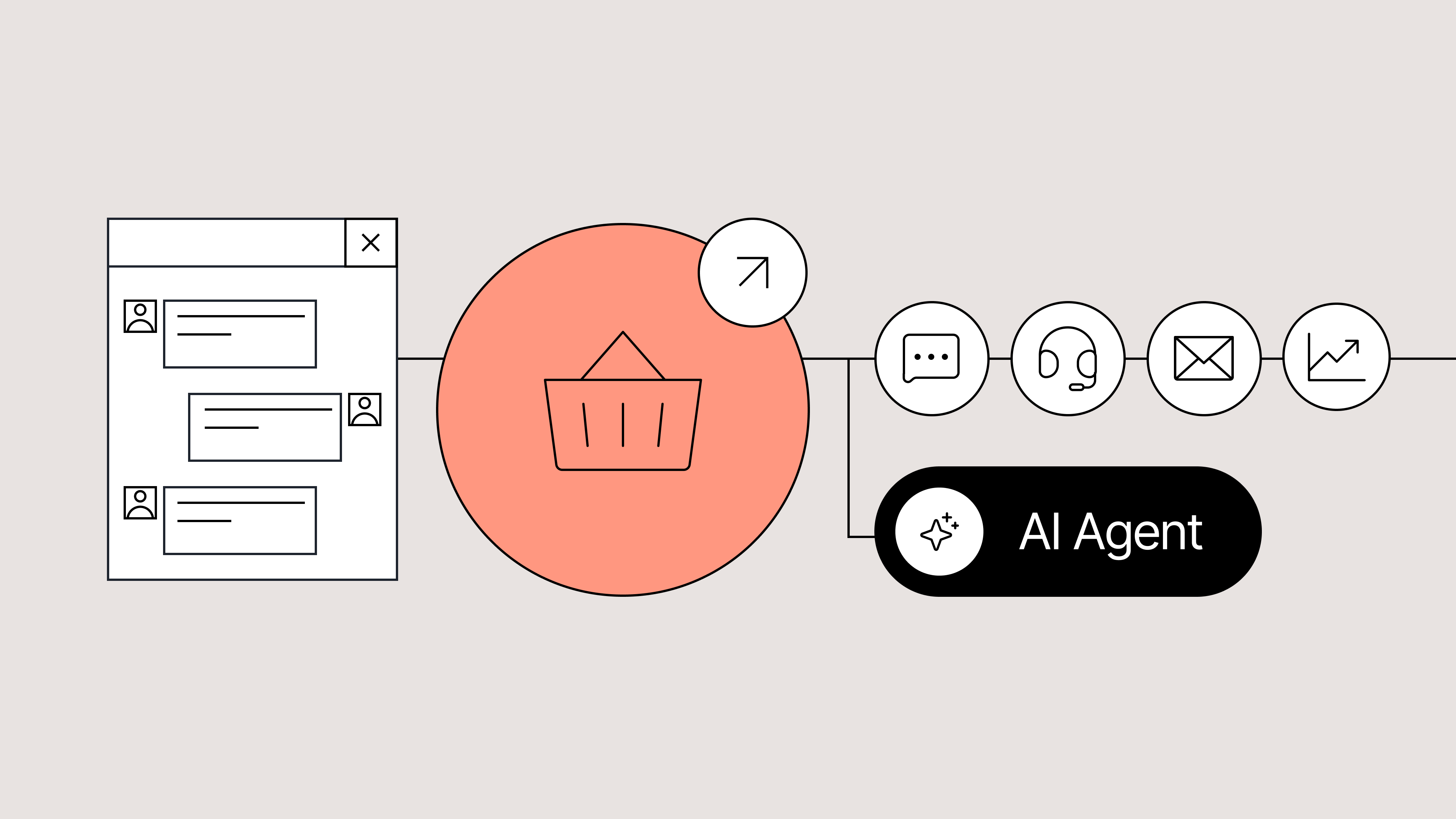


How Online Sizing Solutions Are Replacing the Fitting Room
TL;DR:
- 58% of fashion shoppers “bracket” orders—buying multiple sizes and returning what doesn’t fit. This drives high return rates, increased costs, and customer frustration.
- 70% of returns are due to sizing issues. Nearly half of shoppers abandon carts over inconvenient returns.
- Leading solutions include: AI-powered fit tools, 3D visualizations that show scale and model stats, “fit finder” tools, at-home fitting experiences, and AI-powered customer support.
- Brands that replicate the fitting room online gain higher retention, lower costs, and stronger sustainability.
Sizing has long been a friction point for ecommerce fashion shoppers.
Without the ability to try items on, 58% of shoppers resort to "bracketing"—ordering multiple sizes of the same piece and returning what doesn’t fit.
While it gives customers a temporary fix, it ultimately creates frustration for them and logistical headaches for brands.
The result is rising return rates, higher costs, and wasted resources. To break this cycle, ecommerce brands need to rethink how they guide shoppers toward the perfect fit. The good news is that many brands are already showing the way by using AI-powered tools and smarter product experiences to replicate the fitting room from the comfort of home.
{{lead-magnet-1}}
Returns are getting unsustainable
Recent data highlights just how severe the return challenge has become for fashion and apparel retailers:
- 46% of shoppers have abandoned a purchase because return methods were inconvenient.
- Fashion and apparel brands get twice as many return requests than any other industry.
- According to Gorgias data, 70% of returns are due to sizing confusion.
- “Will this fit me?” is one of the top reasons customers contact support.
In addition, rapidly rising concerns around sustainability and climate change, as well as heightened awareness around over-consumption, are prompting consumers to make changes in their purchasing habits.
Brands who prioritize well-fitting, long-lasting pieces and reduce carbon footprints and the amount of clothing diverted to landfills by lowering returns can actually benefit from a strategic edge.
“Those who choose to approach sustainability with a long-term mindset even while battling short-term problems will be rewarded with more efficient business operations and a competitive advantage,” writes McKinsey in its State of Fashion 2025 report.
Effective sizing solutions for ecommerce brands
Most brands already have size charts, but shoppers don’t want to measure themselves, or find those charts to be inaccurate.
When shoppers lack confidence in choosing the right fit, they either abandon their carts or rely on bracketing, both of which lower profitability and customer trust.
Forward-looking fashion and apparel brands are solving sizing issues by using tools for a more intuitive shopping experience. This ultimately helps them build loyalty, increase retention, and reduce returns.
Implement AI-powered body measurement tools
Rather than purely providing static size charts on your website, opt for AI-generated personalized fit recommendations instead.
For example, European fashion retailer Zalando reduced size-related returns by 10% using AI-driven advice.
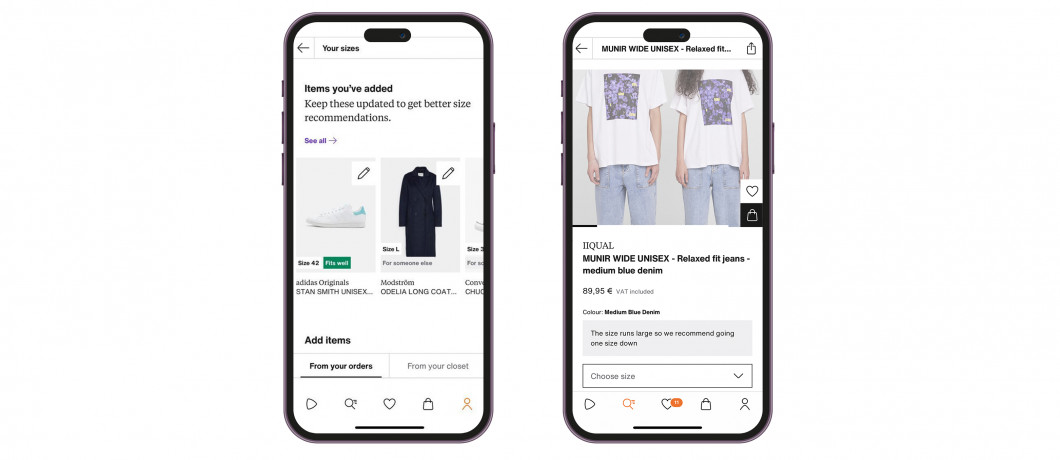
The brand flags whether an item is true to size or not. It also offers the ability for customers to see recommendations based on logged fit-based return reasons, past purchases, and other clothing items that fit them well.
Zalando also launched a body measurement feature in 2023 where shoppers can actually scan themselves for more accurate size advice.
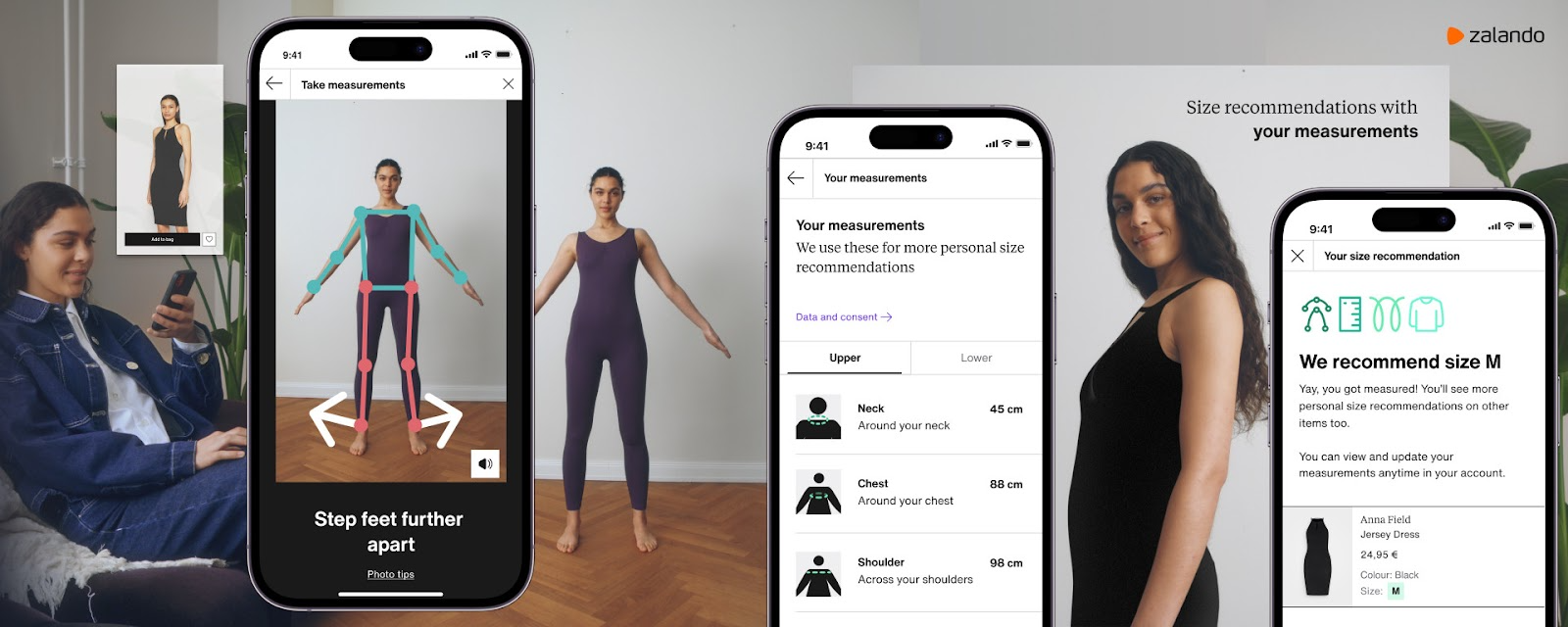
Show size and scale in product photos
As AI grows in proficiency, there are more tools than ever to help shoppers visualize product scale and fit.
For example, accessory shop LeSportsac uses Tangiblee, a product experience tool, to help customers understand scale and what fits inside each bag.
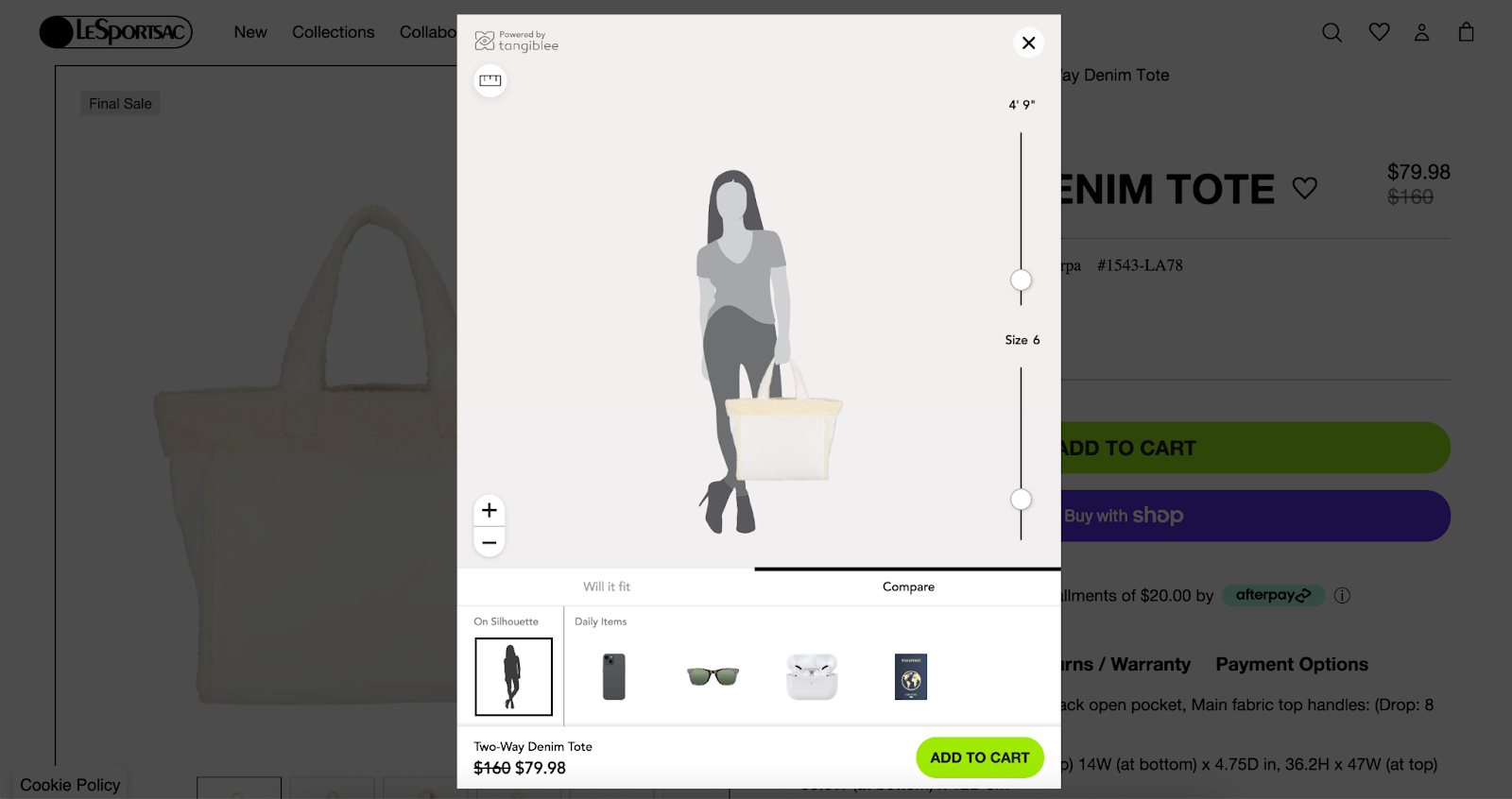
Performance hunting gear shop KUIU takes another approach. It uses a photo-based layering guide, so shoppers can see how the size and fit look with multiple layers on a model. Different model stats shown within product photography give contextual sizing cues.
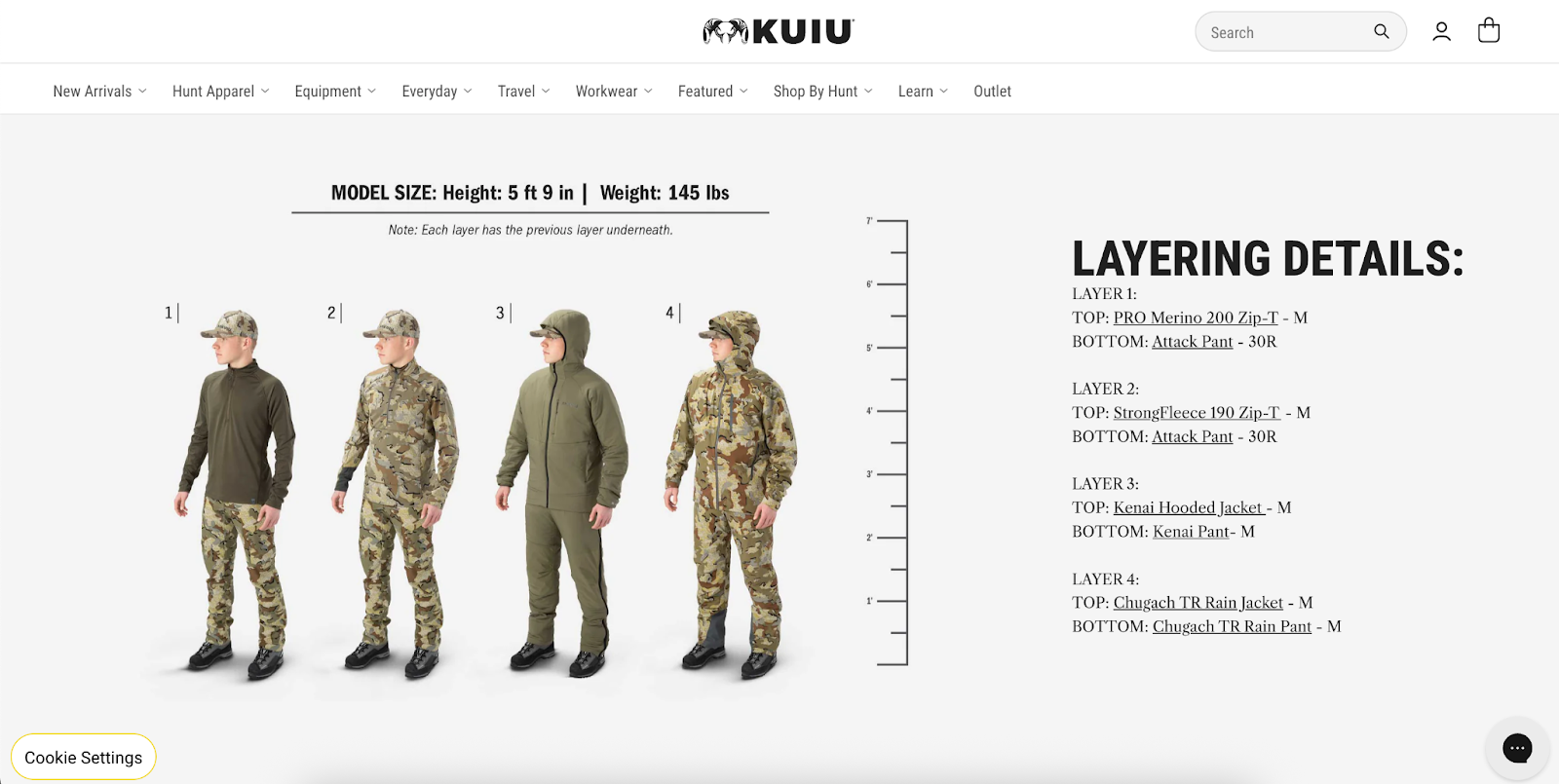
Sleep shop Cozy Earth takes a similar route, stating model height and size on product photos.
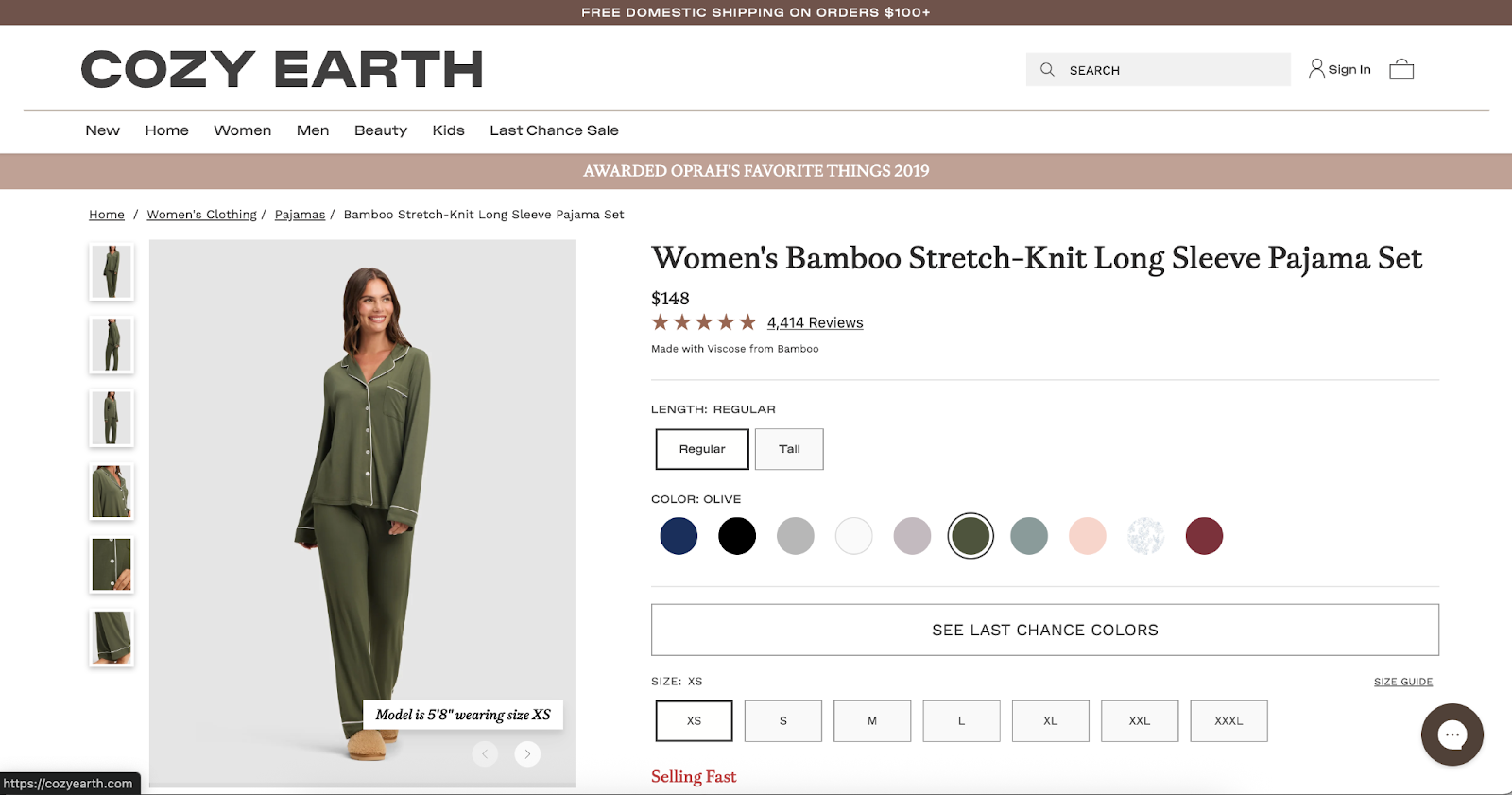
Introduce “fit finder” tools
Some brands are helping shoppers pick the right size with interactive quizzes based on factors like height, weight, and the sizes of other clothing items that fit well. SuitShop is among those brands using a Fit Finder quiz on its website.

Similarly, Psycho Bunny leverages the AI tool True Fit as a size finder on product pages.
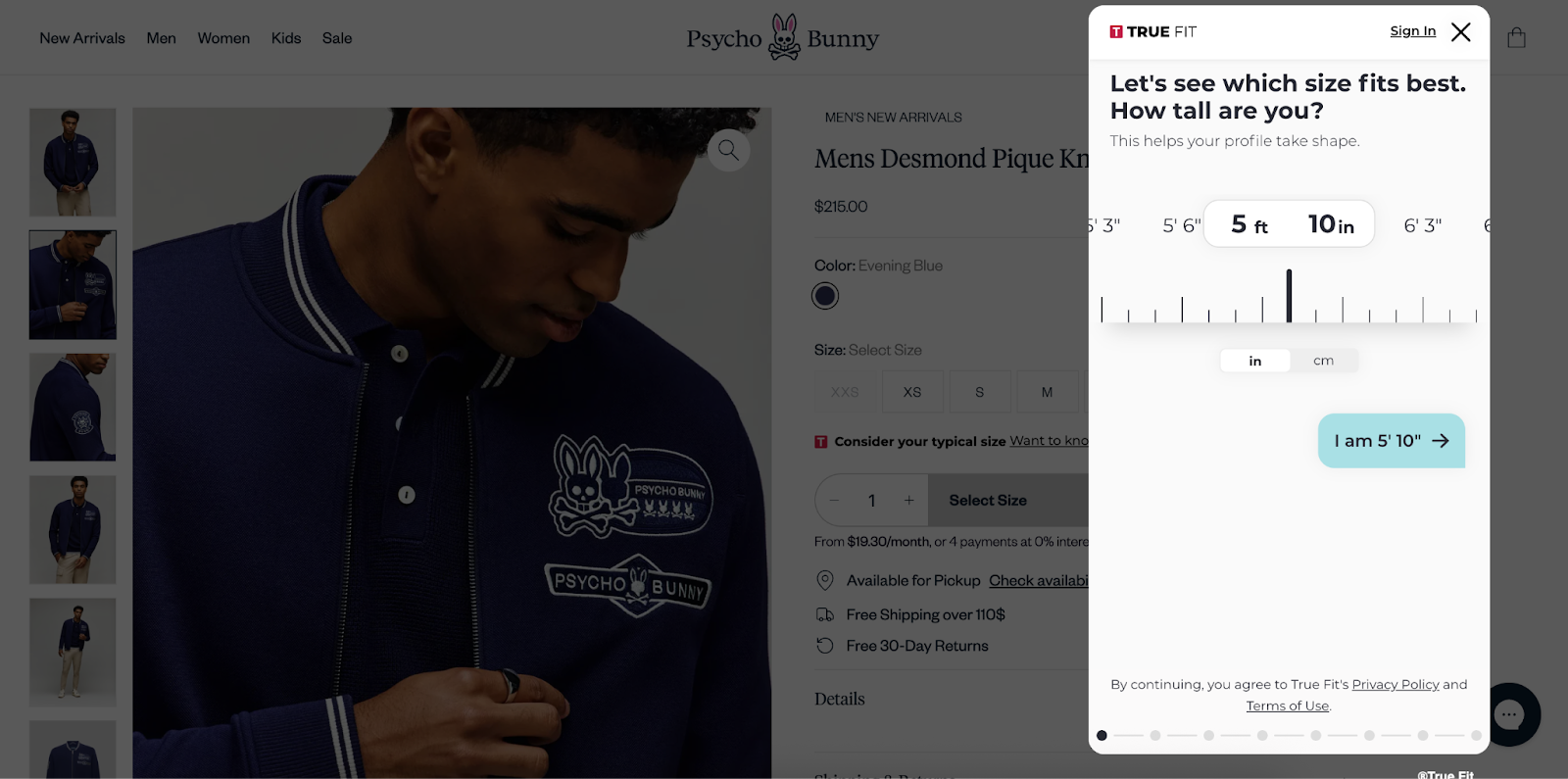
Bring the fitting room home
Ergonomic shoe brand Orthofeet eliminates sizing qualms altogether by including customizable inserts inside each box. Fitting spacers ensure a snug fit and arch enhancement for those who need it, helping shoppers get comfortable shoes that fit.

Jonas Paul Eyewear shares the “try it on at home” approach, offering a free or low-cost home try-on kit.

Leverage AI-powered customer support
Gorgias Shopping Assistant helps brands meet that need by delivering human-like guidance at scale, giving shoppers instant answers that feel personal.
For example, VESSEL uses Shopping Assistant in chat to provide real-time support on sizing and inventory, helping customers choose with confidence. By addressing fit questions directly, Shopping Assistant reduces returns and builds trust at the point of purchase.

Similarly, outdoor clothing retailer Arc‘teryx provides an “ask me anything” AI chat where shoppers can confirm any questions they have around fit or sizing.
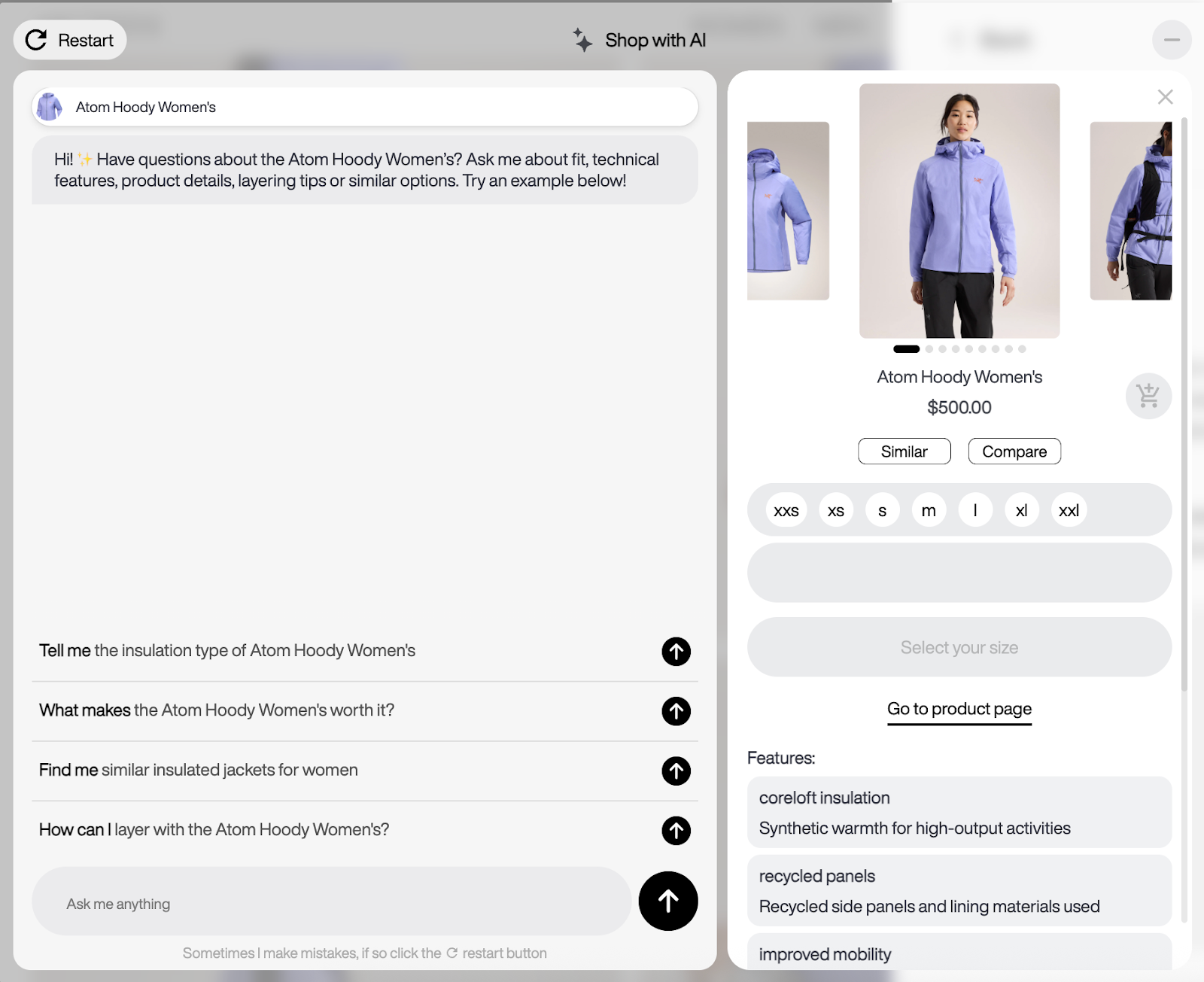
The future for ecommerce size guides
Sizing for ecommerce fashion and apparel brands has become a business-critical challenge. With 70% of returns tied to fit issues and nearly half of shoppers abandoning purchases over inconvenient returns, brands that replicate the fitting room online stand to gain a competitive advantage.
From Zalando’s 10% reduction in size-related returns to VESSEL’s use of AI-powered chat, the path is clear: investing in smarter size chart solutions pays off with higher retention, lower costs, and stronger sustainability.
The brands that provide fitting room-level experiences online now will set themselves apart from the rest.
Book a demo to see how Gorgias, the leading conversational commerce platform, helps fashion brands cut returns, drive sales, and deliver fitting-room level experiences online.
{{lead-magnet-2}}
TL;DR:
- Conversational commerce replaces static support with real-time conversations. Instead of making customers wait or dig through FAQs, brands can respond instantly via chat, messaging apps, and voice assistants.
- The main types are live chat, AI assistants, messaging apps, and voice support. Each helps guide shoppers and answer questions instantly.
- It’s most effective during key moments like cart hesitation, post-purchase anxiety, and peak seasons. Proactive conversations reduce drop-offs and boost conversions.
- Start small and scale. Begin with repetitive questions or cart recovery, then layer in automation and AI as you grow.
While your competitors are still making customers wait days for email replies, the smartest brands are having conversations that close sales in real time.
Instead of forcing customers to search through FAQs or go through an automation loop, conversational commerce lets you have instant chats through live chat, messaging apps, and even AI assistants.
In this guide, we’ll explain conversational commerce, where it delivers the most value, and how to start using it to drive revenue and improve CX without overwhelming your team.
What is conversational commerce?
Conversational commerce means using real-time, two-way conversations as your storefront. Rather than bottling up questions in FAQ pages or forcing customers to wait for your support team to respond, you can instantly connect via:
- Chat
- AI agents
- Messaging apps
- Voice assistants
Maybe someone is on your product page and asks a question like, “Does this jacket run large?”. Through chat, they get an instant answer, increasing the chance of a sale. Or a shopper receives personalized recommendations via WhatsApp and checks out, all without leaving the app.
These channels allow you to meet customers where they already are, effortlessly. When paired with AI chatbots, you can deliver fast, accurate responses 24/7, even while your team is off the clock. That means better experiences for your customers and more sales captured for your brand.
Conversational commerce bridges the gap between shopping and support. It turns your support team (and AI tools) into revenue drivers by helping shoppers feel seen, heard, and ready to buy.
Types of conversational commerce
Conversational commerce means bringing your storefront into the flow of conversation, wherever that happens for your customers.
Here’s where those conversations typically happen:
- Live chat
- AI assistants
- Messaging apps
- Voice assistants
1. Live chat
This is a chat widget on your site, often in the bottom right corner, where shoppers can ask questions and receive immediate answers from a human agent or automation.
It’s a quick path to support or purchase, which one agent can manage multiple chats from simultaneously, boosting efficiency and keeping things personal.
2. AI assistants
These smart helpers use Natural Language Processing (NLP) to understand what shoppers mean beyond what they type. They guide customers through questions, offer product suggestions, handle FAQs, and can sometimes complete transactions right in the chat, even handling post‑purchase support like order status or returns.
Natural Language Processing (NLP): The processing of understanding and interpreting natural language using computers. NLP is used in tasks such as sentiment analysis, summarization, speech recognition, and more.
3. Messaging apps
Think WhatsApp, Facebook Messenger, WeChat, and SMS—the apps where customers already spend their time in their day-to-day. Instead of sending them to shop on your website, you bring the shopping to them. Answer their questions, provide recommendations, and win purchases in a channel they already trust.
4. Voice assistants
Voice assistance isn’t limited to smart speakers like Siri and Alexa anymore.
Now, AI voice support lets brands deliver natural conversations over the phone, without needing a massive contact center team. These AI voice agents can:
- Answer common questions using branded knowledge
- Route calls or escalate when needed
- Handle returns, exchanges, or order tracking
- Personalize support based on customer intent and past behavior
AI-powered voice support combines the human feel of a phone call with the speed and accuracy of automation. It's especially useful for high-ticket products, customers who prefer calling, or peak season overflow when your human team is maxed out.
The benefits of conversational commerce for ecommerce brands
Conversational commerce isn’t a CX buzzword. When done right, it directly impacts your bottom line.
Here’s how it pays off for ecommerce brands:
- Higher conversion rates
- Faster and more efficient support
- Bigger carts, fewer drop-offs
- Stronger customer relationships
1. Higher conversion rates
When customers can ask questions and get answers in real time, whether it's sizing info, shipping details, or help choosing between products, they’re far more likely to hit “buy.”
Success story: Clothing brand Tommy John generated $106K+ in sales in just two months through conversation-led upselling and cross-selling, with a 15% conversion rate.
2. Faster and more efficient support
Conversational commerce tools like AI agents help offload the repetitive support tasks, including answering questions like “Where’s my order?” or “What’s your return policy?”
With that time back, agents get time back to:
- Handle complex or sensitive customer issues
- Follow up with VIP customers
- Collaborate with marketing and sales teams to improve processes
- QA conversations to enhance human and AI agent performance
- Update knowledge docs used by AI tools for more accurate resolutions
Instead of getting buried in basic tickets, your team gets to do the work that really moves the needle for your customers and your business.
Related: Every successful marketing campaign starts with a customer question
3. Bigger carts, fewer drop-offs
The right nudge at the right moment, like a personalized recommendation from an AI shopping assistant, can turn a single item into a full cart. You can also recover more abandoned checkouts by re-engaging customers directly through chat or a messaging app.
Read more: You’re missing out on sales without an AI shopping assistant—here’s why
4. Stronger customer relationships
Conversational commerce lets you meet customers with a human (or human-like) touch. When your brand is helpful, fast, and easy to talk to, shoppers remember and return.
In the long run, that means better customer retention, higher lifetime value, and more organic growth through word of mouth.
When conversational commerce creates the biggest impact
Conversational commerce shines brightest when the stakes are high or when the moment is just right.
Here are the critical moments where a real-time conversation can make all the difference:
- When shoppers have items in their cart but are hesitating to check out
- Right after customers place an order, and anxiety starts to kick in
- During peak shopping seasons like Black Friday and Cyber Monday
- When customers are browsing complex products like skincare, makeup, or apparel
1. When shoppers have items in their cart but are hesitating to check out
A customer’s on your product page, they’ve added an item to their cart, but are hesitating. Maybe they’re unsure about sizing, shipping time, or which variation to choose. This is where a quick, helpful chat, automated or human, comes in and becomes the difference between bounce and conversion.
Pro tip: Use proactive chat prompts based on page behavior to start the conversation before the shopper leaves.
2. Right after customers place an order, and anxiety starts to kick in
After a customer hits “place order,” expect more questions to roll into your inbox. Where’s my order? How do I track it? What’s your return policy? Post-purchase excitement—and anxiety—is normal, and a smart AI agent helps you get ahead of these questions while putting customers at ease.
3. During peak shopping seasons like Black Friday and Cyber Monday
Black Friday. Holiday rush. Product drops. These are prime opportunities to boost revenue—but they also flood your support team. Conversational commerce tools help you scale without sacrificing quality, keeping shoppers happy and sales flowing.
4. When shoppers are browsing complex products like skincare, makeup, or apparel
If you sell skincare, supplements, tech, or anything that requires a bit of education, your customers likely need guidance before they commit. A personalized conversation helps them find the right fit and feel more confident in their purchase.
What to consider before you start
Conversational commerce sounds exciting, and it is. But before you dive in, it’s worth thinking through a few key factors to set your team (and your customers) up for success.
- Cost vs. ROI: Start small, scale smart
- Team resources: Who’s managing the conversations?
- Customer expectations: Meet them where they are
1. Cost vs. ROI: Start small, scale smart
You don’t need a full-blown chatbot army on Day 1. Start with your highest-impact touchpoints, like pre-sale FAQs or WISMO questions, and layer in automation over time. The goal is to generate clear ROI early, then expand once you see traction.
Here’s how to gradually implement automation into your CX process:
- Identify your top repetitive questions. Use your support data to pinpoint your most common tickets. For most brands, these are WISMOs, shipping concerns, and product-specific questions.
- Create macros for your most-asked questions. These macros will be used to answer the top recurring questions. For agents, this means no more copy-pasting the same responses.
- Build out self-service automation flows. Once you’re feeling more comfortable with automation, set up self-service flows to let customers resolve their own needs, like checking order status, starting a return, or finding their size.
- Automate your top channels. Don’t stop at email. Automate responses on live chat, Instagram DMs, and SMS too. Shoppers expect speed everywhere, not just on your site.
- Maintain impact, then introduce conversational AI. If your CSAT is still healthy after these changes, you can expand to using conversational AI for faster support and team efficiency.
The goal isn’t to automate everything, it’s to automate smartly so your team can spend time where it counts: high-touch sales, VIP support, and strategic growth.
2. Team resources: Who’s managing the conversations?
Do you have in-house agents ready to handle live chat? Or do you need automation to handle the bulk of it? Make sure your setup aligns with your team’s bandwidth.
Pro tip: Tools like Gorgias AI Agent and Shopping Assistant can handle the support and sales heavy lifting, making them perfect for lean CX teams.
3. Customer expectations: Meet them where they are
Your customers aren’t just on your website. They’re messaging on Instagram, browsing via mobile, or checking their texts. To deliver great conversational commerce, you’ll want to show up in the places your shoppers already use.
Pro tip: Don’t spread your efforts too thin. Start with the channel that aligns with your goals and customer behavior, live chat, SMS, or social DMs, and build from there.
How to get started with conversational ecommerce in 2 steps
Ready to make conversational commerce part of your CX strategy? You don’t need to overhaul your tech stack or hire a whole new team. With Gorgias, you can start fast, stay lean, and scale smart.
Here’s how:
1. Start with AI Agent for 24/7 support
Gorgias AI Agent is designed to take repetitive tickets off your team’s plate, from “Where’s my order?” to “How do I make a return?” It understands natural language, pulls in relevant customer data, and responds in seconds—all using your brand’s approved knowledge.
The result is faster responses, fewer tickets, and more time back for your team.
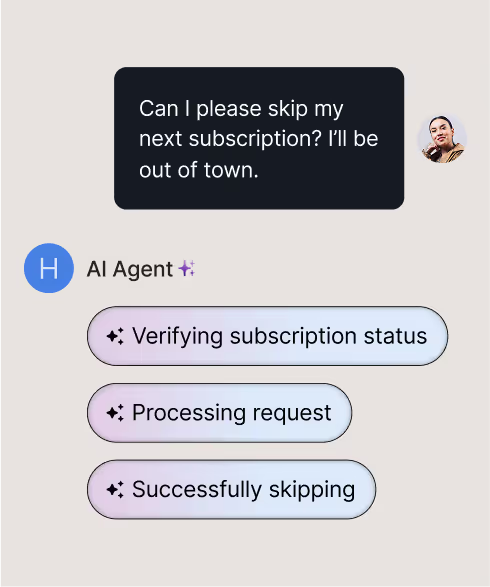
2. Add Shopping Assistant to drive revenue
While AI Agent, covers the support front, Shopping Assistant is your digital salesperson. It engages high-intent shoppers in real time, recommends the right products, and even upsells or cross-sells based on what the customer is browsing.
Whether it’s helping someone choose the perfect shade or nudging them to complete their cart, Shopping Assistant is designed to increase AOV and reduce abandonment.
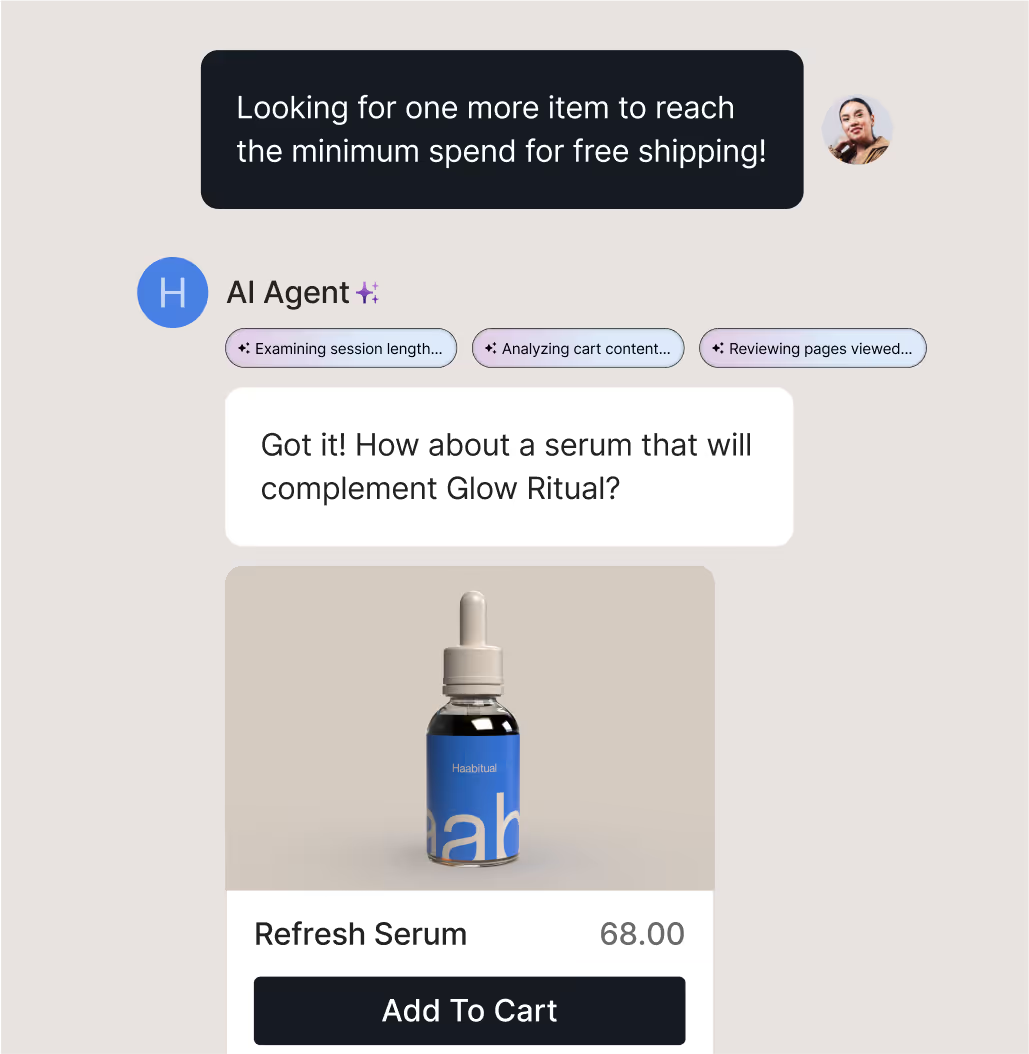
The future of ecommerce is conversational
Every time a shopper lands on your site, scrolls through Instagram, or replies to a shipping update, they’re opening the door to a conversation. The brands that show up quickly, helpfully, and with the right message, are the ones winning loyalty and revenue.
With AI Agent, you can automate accurate responses to common questions, giving your team time back without sacrificing customer experience. And with Shopping Assistant, you can turn those conversations into conversions, offering personalized recommendations, upsells, and discounts based on shopper intent.
You don’t need a massive team or months of setup to start. Just the right tools, and a strategy built for your customers.
Book a demo and learn how Gorgias helps you turn every conversation into an opportunity to grow.
{{lead-magnet-2}}
Newsletter Signup
The best in CX and ecommerce, right to your inbox
Featured articles
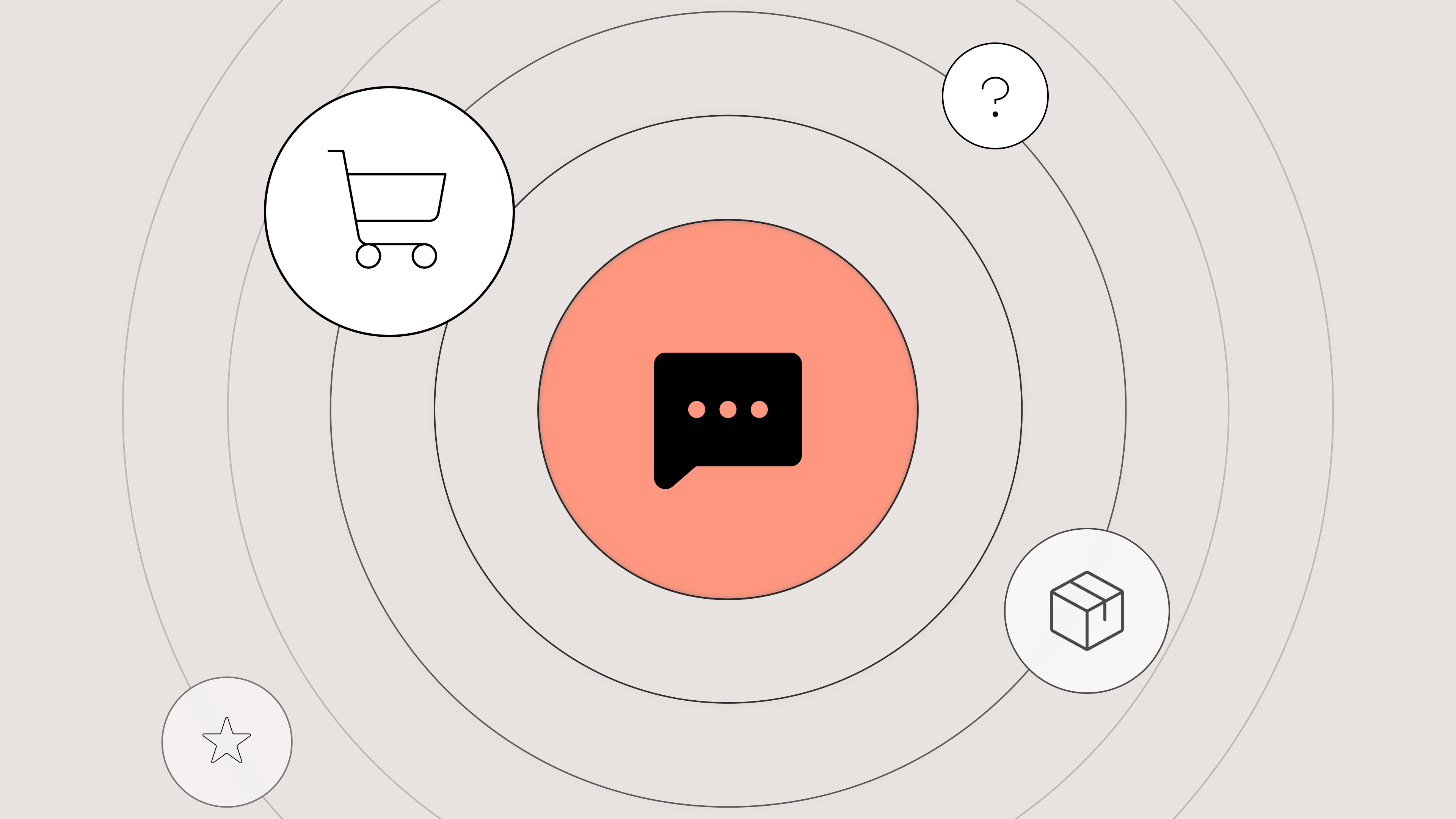
Should You Offer Live Chat Support? A Guide for CX Teams
TL;DR:
- Live chat is the fastest way to help shoppers. It gives customers real-time answers and prevents drop-off.
- You don’t need a 24/7 team to run live chat. Automate FAQs and set clear hours to keep it manageable.
- Live chat improves conversions and customer loyalty. Shoppers who chat are more likely to make a purchase and return to your store.
- Start by automating questions like order tracking and returns. These are easy to answer and make up most of your volume.
- Gorgias makes it easy to launch and scale live chat. You can integrate with your store and go live in under a day.
According to 2025 Gorgias data, chat inquiries are resolved in 24 minutes versus two days on email. It’s no wonder customers prefer live chat over any other support channel.
If you aren’t already offering live chat, it might feel like a big commitment. But when the end product is happier customers, it’s high time to catch up.
Thinking about offering live chat? Learn more about the benefits of live chat customer support, how it differs from chatbots, when and how to use it, and the best live chat tools to use based on your team’s needs.
What is live chat support?
Live chat support is a form of customer service that uses a chat widget to intake customer inquiries. Ecommerce websites, browser-based tools, and mobile apps typically offer live chat in combination with other customer service channels like email, phone, and social media.
Depending on the business, live chat support availability can vary. Some businesses choose to run live chat within their operating hours, while others extend 24/7 availability with the help of automation, conversational AI, or a dedicated off-hours team.
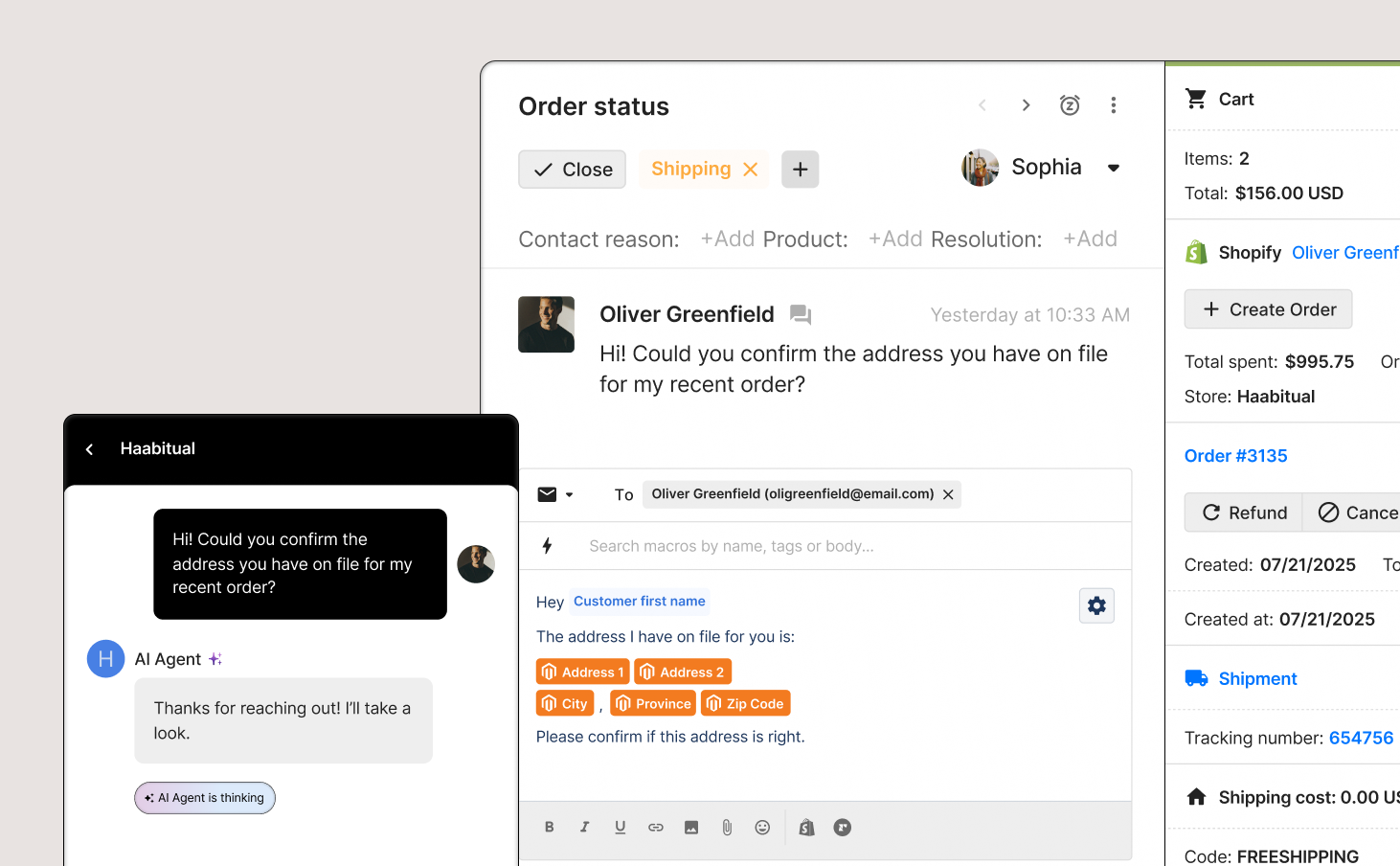
Related: Customer service messaging: Tips and templates for SMS + conversational channels
How does live chat support differ from a chatbot?
The main difference between live chat and chatbots is the option to speak to a live human agent.
With live chat support, customers always have the option of speaking to a live human agent. Meanwhile, chatbots can only provide customers with automated responses, whether preconfigured or generated by AI.
Why should you offer live chat support?
Live chat doesn’t just make support faster—it helps you close more sales.
Aside from quick answers, customers want confidence to buy. In fact, Hiver reports that 63% of consumers prefer live chat over phone and social media, mainly because they get instant answers while they’re still browsing.
Here are the benefits of implementing live chat for your business:
- Customer satisfaction: Customers get the clarity they need while shopping
- Higher conversions: Live chat removes friction at checkout by resolving doubts in real time
- Faster resolutions: Support teams close tickets faster by solving issues right away
- Revenue retention: Agents can recommend the right product, reducing the chance of returns later
Read more: A guide to resolution time: How to measure and lower it
When does live chat make the biggest impact?
Live chat shines in situations where timing directly impacts whether a customer buys your product or walks away. These conversations often happen before a purchase, like when a shopper is deciding between products, has concerns about shipping, or wants to confirm your return policy.
Use live chat in these moments:
|
Moment |
Why Live Chat Works |
|---|---|
|
Before a purchase |
Provides instant product education, assurance, and curbs hesitation due to a lack of information |
|
Order-related concern |
Resolves time-sensitive questions on shipping or changes before the customer bounces |
|
Checkout hesitation |
Reduces cart abandonment by addressing doubts |
|
FAQs |
Deflects repetitive tickets through automation, freeing agents for complex conversations |
|
High-value customers |
Offers high-touch service that reinforces loyalty and drives repeat purchases |
|
Bulk orders |
Accelerates large sales by delivering clarity when urgency is high |
How automation makes live chat support scalable
You don’t need a large support team to offer high-quality live chat support. Sure, live chat can feel risky if you’re a brand with a lean CX team or high ticket volume, but when you automate the right types of conversations, it becomes one of the most impactful support channels.
What to automate first
Start with high-frequency, low-complexity inquiries. These are repetitive questions that don’t require an agent to resolve:
- Order tracking (where is my order)
- Shipping, return, exchange, and cancellation policies
- Basic troubleshooting
- Product education, like sizing or fit guides
These types of tickets typically make up the bulk of your live chat volume. Automating them clears the way for agents to focus on conversations that require more specialized knowledge and nuance.
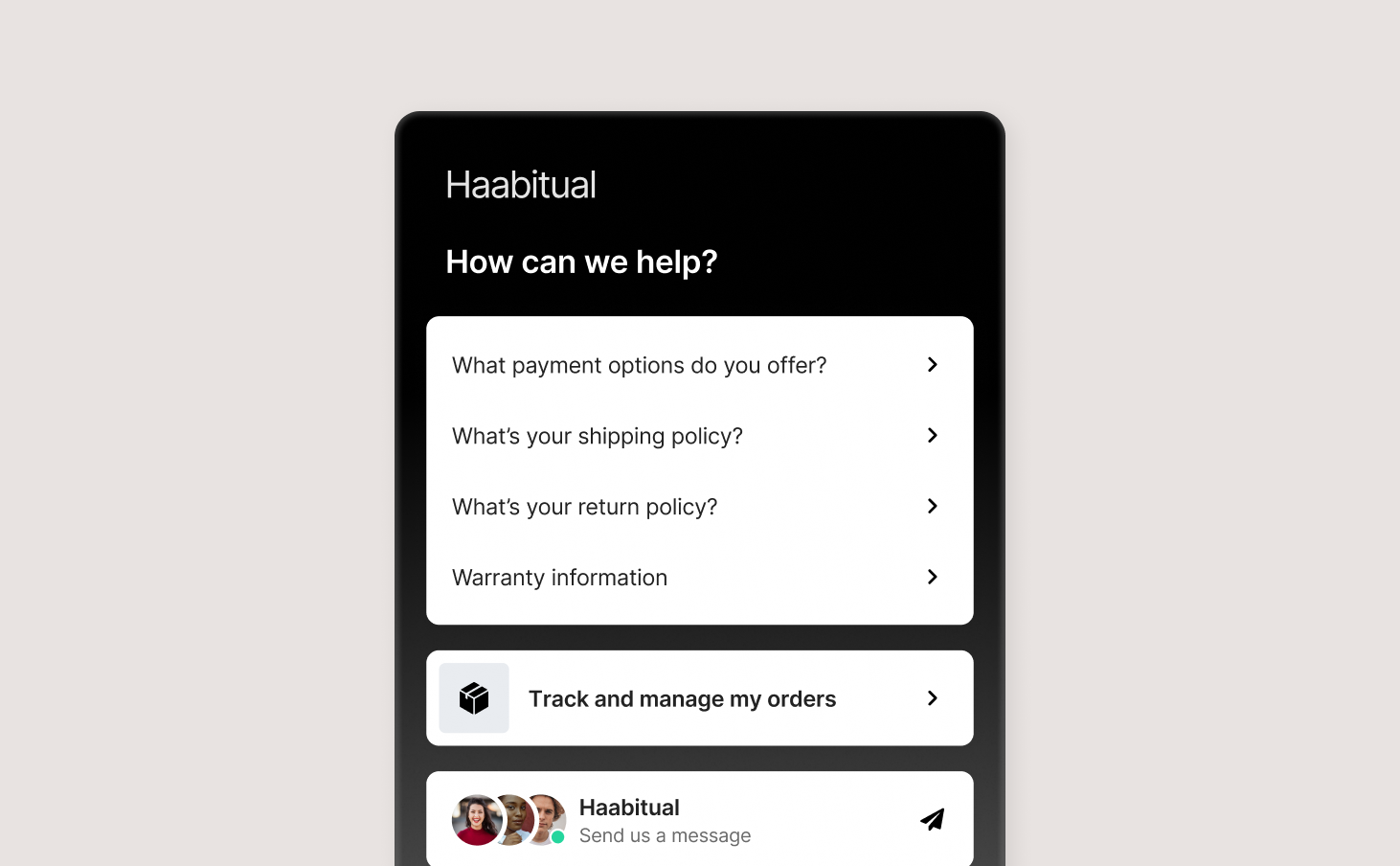
Automation features that help you scale
The best live chat isn’t only a messaging tool, it also comes with features that make the support agents using it more productive.
Here are the top automation features to improve live chat:
- Macros: One-click prewritten replies to common questions that agents can send manually or automatically.
- Customer and product variables: Dynamic details—like name, order number, and delivery date—pulled from your ecommerce platform and inserted into messages can easily make interactions more personalized.
- Flows: Interactive Q&A scenarios that automatically answer customer questions in the chat widget.
- Routing: Prioritize or assign tickets to agents based on topic, urgency, or language for maximum efficiency.
- Conversational AI: Leave live chat on 24/7 with tools like Gorgias AI Agent to answer repetitive questions and update orders—even when your team is offline.
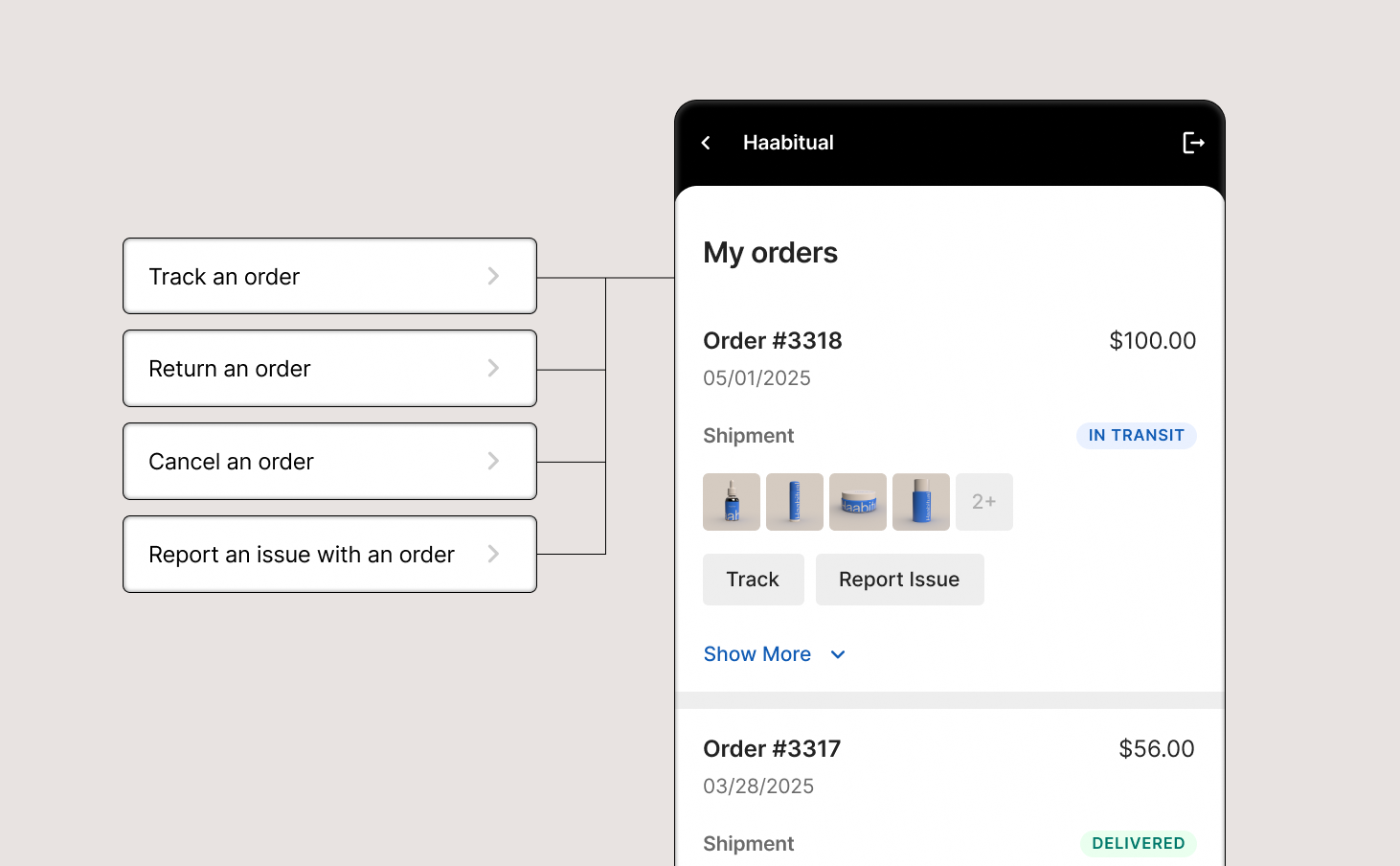
The dos and don’ts of replying to a live chat message
Good live chat messages are quick, helpful, and easy to follow. Poor live chat messages are slow, robotic, or long-winded.
Follow these guidelines to help keep your replies effective and consistent:
|
Do ✅ |
Don’t ❌ |
|---|---|
|
Respond within your target SLA |
Leave customers waiting |
|
Keep responses concise |
Send long, wordy messages |
|
Use macros and templates as a starting point |
Manually type everything again and again |
|
Ask clarifying questions |
Assume you understand everything |
|
Be transparent if you need more time |
Promise something you can’t deliver |
|
Confirm resolution before ending the conversation |
End the chat without checking if the issue is solved |
How to set up live chat without overwhelming your team
Adding live chat for the first time or want to make your current setup more manageable? Start with these five steps:
1. Set live chat hours
You don’t need to be online at all times to offer live chat. Start by choosing live chat hours that reflect your team’s availability and peak shopping hours.
Remember to display your availability on your website clearly to manage customer expectations.
2. Prioritize live chat tickets in your inbox
Customers who reach out to you via chat are active on your site and often close to purchasing.
Create rules in your helpdesk that flag live chat conversations as urgent, so they don’t get buried under slower channels like email. If you have a dedicated agent who handles chat, route all chat tickets to them for instant visibility.
3. Automate your first reply
Set up an auto-response that triggers immediately when someone starts a chat. Even a short message like “Hey! Thanks for your message, an agent will be right with you,” can reduce drop-off and give your team time to prep.
4. Edit your macros for live chat
Templates that work in email may be too wordy in chat. Shorten your macros, simplify the tone, and make sure each response fits cleanly into a chat window. Use dynamic variables to pull in details like order number or shipping status without slowing down your agents.
5. Capture customer emails when live chat is offline
Customers don't stop having problems when your team clocks out. When someone tries to chat outside business hours, collect their email so an agent can follow up once your support team is back online.
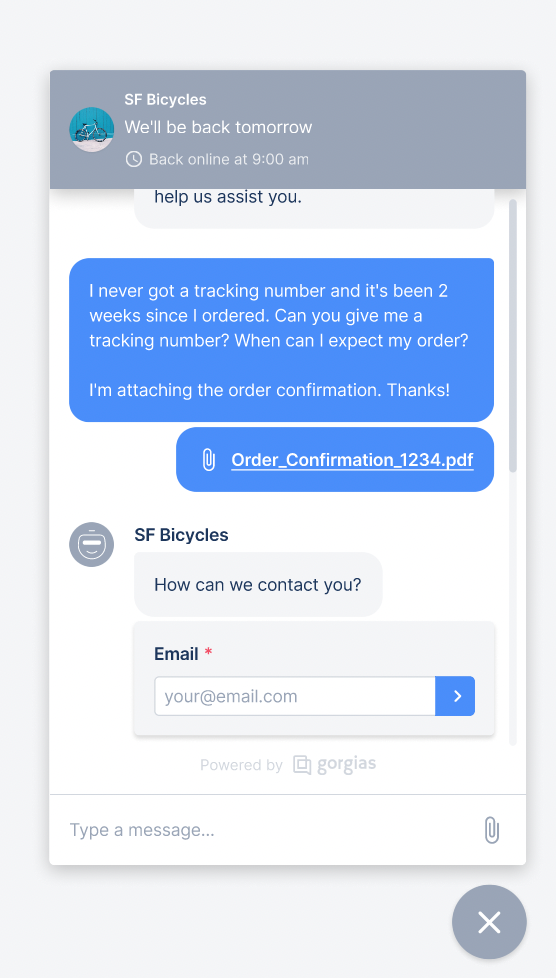
Best live chat tools for CX and support teams
If you’re evaluating live chat software, here are five solid options to start with. Each one fits different team sizes and priorities.
|
Tool |
Pricing Model |
Best For |
Standout Feature |
Limitation |
|---|---|---|---|---|
|
Gorgias |
Per ticket |
Ecommerce brands |
Conversational AI that handles support and drives sales with upsells, recommendations, and context-aware discounts |
Limited AI features for non-Shopify ecommerce stores |
|
Zendesk |
Per user |
Large CX teams with dev resources |
Highly customizable for large support orgs |
Built for general use, not ecommerce; limited email AI; high setup cost |
|
Intercom |
Per user |
SaaS and product companies |
Built-in onboarding and product messaging tools |
Not ecommerce-focused; limited integrations and high AI cost |
|
Tidio |
Per ticket |
SMBs looking for budget automation |
Affordable chatbot + live chat combo |
Lacks visual upsell tools and struggles with complex sales questions |
|
Richpanel |
Per user |
Early-stage teams |
Simple UI and fast time to launch |
Buggy UI, no AI Agent, slow updates, poor Shopify automation |
Deliver faster support without adding headcount
Gorgias helps ecommerce brands deliver fast support without cutting into your budget. Automate common questions with conversational AI, resolve tickets in seconds, support and sell, and give your team the context they need to handle complex conversations with one tool.
Want live chat that takes support to the next level? Book a demo.
{{lead-magnet-2}}
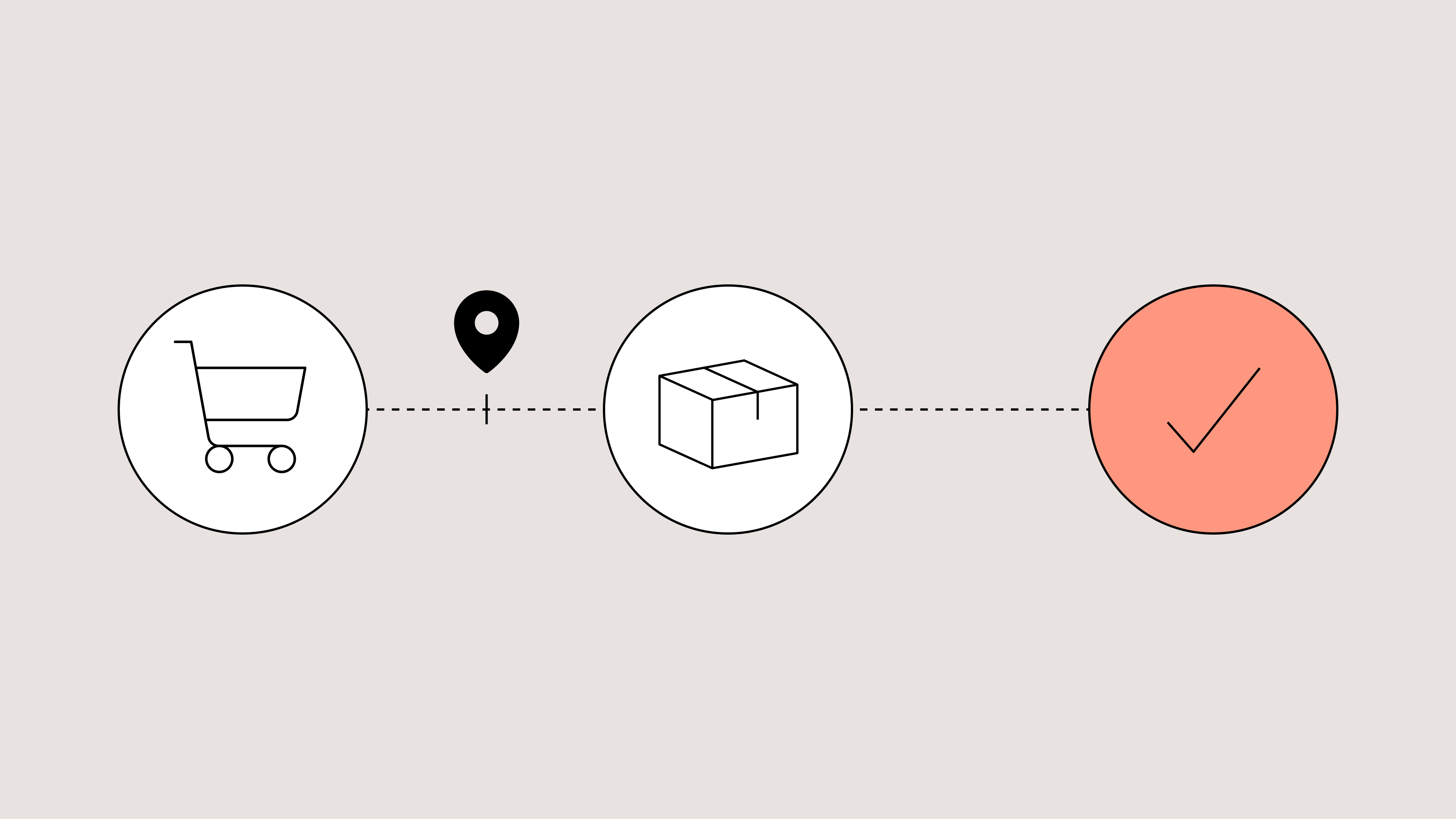
The Complete Guide to Tracking Customer Orders on Shopify
TL;DR:
- Customers expect real-time order tracking. Allow customers to track their orders from anywhere—from their email to your website—at any time to increase their sense of security, reduce returns, and build trust.
- Helpdesk + order tracking = efficient. Choose a solution like Aftership, ShipBob, or ShipStation that integrates with your CX platform. This lets you link shipping data with your customer data, resulting in faster support.
- Offer self-service tracking options. Ensure your shipping information is easily accessible to customers through email, live chat, SMS notifications, and on your website.
Today, order visibility is table stakes. Around 50% of consumers actively track their order status to confirm it's progressing smoothly and staying on schedule.
Whether it’s order anxiety or excitement, shoppers want to see their order's status and location at any given time. Even better when they can get real-time alerts via SMS or at each point in an order’s journey.
So if you haven’t set up order tracking yet, now’s the time, because your customers already expect it. Here’s everything you need to know about the benefits of tracking customer orders and how to implement an order tracking tool for your Shopify store.
{{lead-magnet-1}}
Why is order tracking so important for ecommerce?
Ecommerce vendors like Amazon have normalized order tracking. Today, most, if not all, customers expect to know where their order is.
Offering real-time tracking data for orders benefits both your customer and your business in five distinct ways:
- Peace of mind: Real-time tracking reassures shoppers and helps businesses monitor fulfillment.
- Fewer support tickets: Cuts down WISMO inquiries (18% of tickets) with automated updates.
- Lower returns: Accurate timelines reduce late-delivery returns and protect revenue.
- Stronger loyalty: Reliable tracking builds trust. Late or incorrect deliveries push shoppers away.
- Easy planning: Consumers need to know that an order is on its way to plan their day.
Recommended reading: Ecommerce returns: 10 best practices for taking your online store to the next level
How to set up order tracking for your Shopify store
Here’s how to set up order tracking for Shopify stores:
- Choose an order tracking tool
- Integrate your order tracking tool with Shopify
- Configure your order tracking app’s settings
- Integrate your order tracking app with your CX platform
As an example, we’ll show you how to set up order tracking on a Shopify store with AfterShip Tracking.
1) Choose an order tracking tool
First, choose an order tracking tool like ShipBob, ShipStation, or AfterShip. These tools pull order information, tracking numbers, and shipment status to generate shipping updates for your customers.
Pro Tip: It’s best if your order tracking app integrates with your helpdesk, so that you can offer faster, context-rich customer support.
Read more: 12 best shipping software tools for ecommerce stores
2) Integrate your order tracking tool with your ecommerce platform
Install your order tracking app of choice via the Shopify App Store. For us, it will be AfterShip Tracking.
To complete the integration, go to the AfterShip Tracking dashboard. Click Apps > View more apps > Shopify > Install app. You’ll be redirected to your Shopify settings. Read through the privacy and permission details and click Install app.
Pro Tip: Not sure if you did it correctly? Your store URL will be labelled as “Connected” on the Shopify connection page.

3) Configure your order tracking app’s settings
Time to load your order tracking app with your Shopify data. This is a crucial step to ensure your app uses your courier and order details.
On Aftership Tracking, go to Apps > Store connections > Actions to set up these two actions:
- Courier Mapping: This matches shipping company names between Shopify and AfterShip so tracking data flows correctly even when the same carrier has different names in each system.
- Auto-import settings: This controls which orders automatically sync from Shopify to AfterShip based on criteria like date range, payment status, and fulfillment status, so you only track the orders you want.
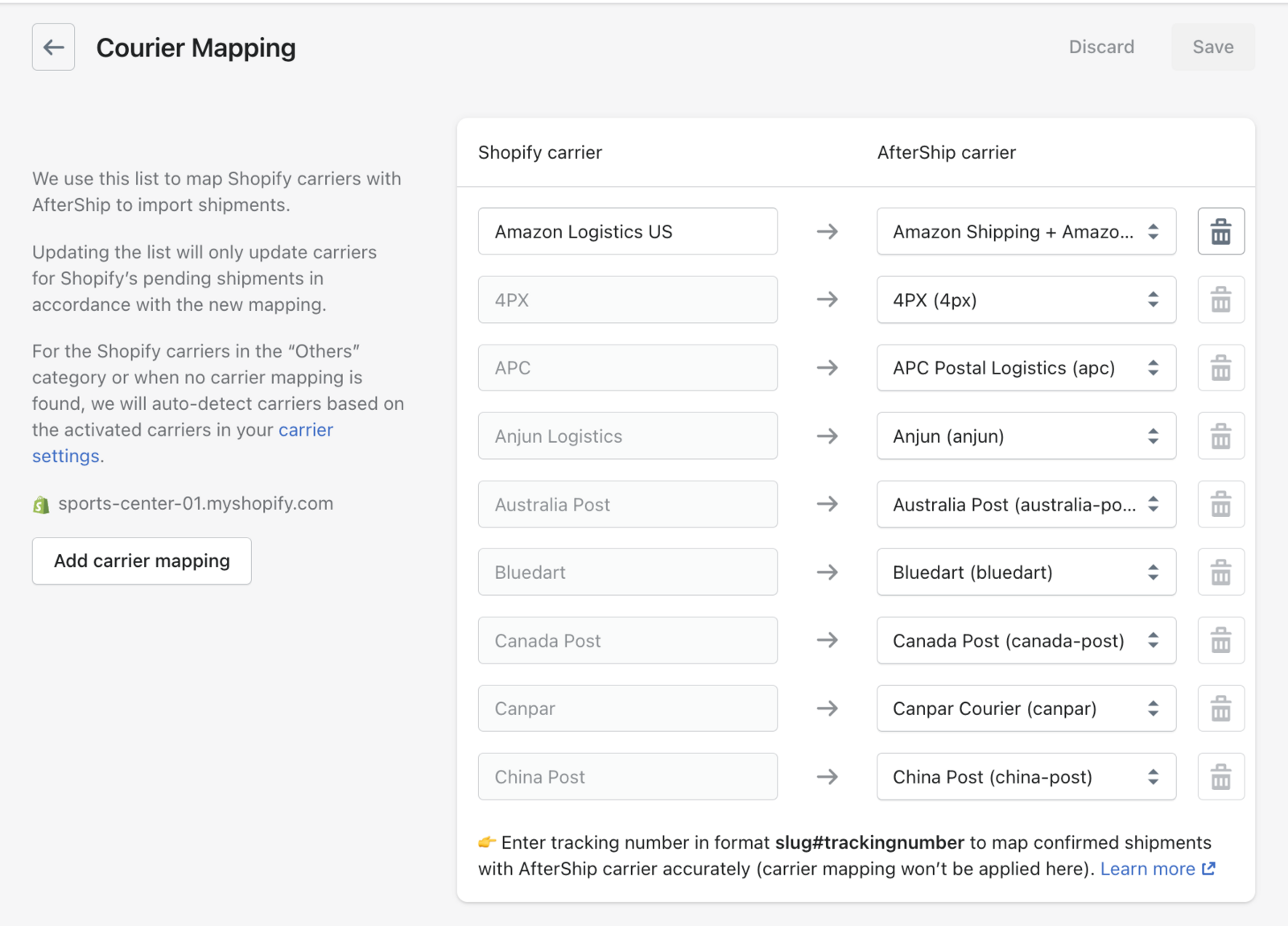
4) Integrate your order tracking app with your CX platform
Finally, connect your order tracking app to your helpdesk.
When customer messages, shipping data, and tracking information are connected, your team can:
- Get the full context with instant access to tracking numbers, shipping addresses, and estimated delivery dates
- Eliminate the need to switch tabs or copy/paste information between tools
- Resolve customer inquiries faster
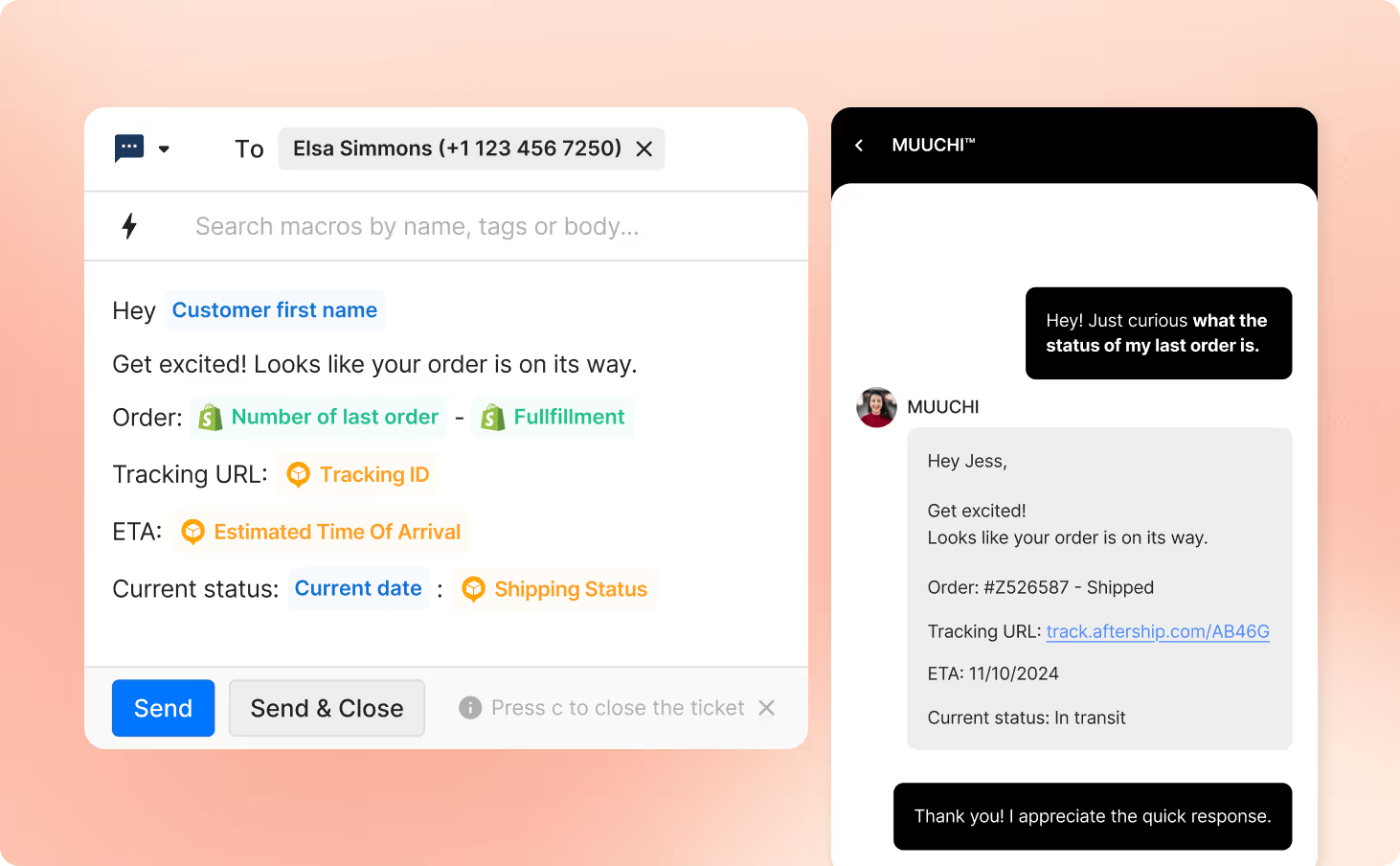
Read more: How to connect AfterShip Tracking to Gorgias
The 6 key spots to add ‘Track My Order’
It’s important to make order tracking accessible to customers, wherever they are. And since more than 68% of orders are done through smartphones, it’s critical to design every tracking touchpoint with a mobile-first experience in mind.
Order tracking should be available in:
- Emails (order confirmation and automated replies): Include the receipt, tracking number, and a link to the tracking portal. Automated replies should also provide updates when customers ask about order status.
- SMS: Send the tracking number and portal link. Use for delivery updates, delays, or exceptions.
- Conversational AI in chat: Provide the order status, tracking number, and delivery estimate directly in the response.
- Self-service order management: Add a “track my order” button in the chat widget with order status, tracking number, and delivery date.
- Help Center (FAQ page): Embed a tracking tool where customers can enter their order number or email to see status and carrier tracking.
- Account portal: Show fulfillment status, tracking number, and carrier link in the “My Account” section for each order.
What are the best order tracking apps for ecommerce stores?
Depending on your needs and the ecommerce platform you use, choose from options that are both scalable and flexible.
ShipBob
ShipBob is a global logistics platform that helps ecommerce brands provide fast, affordable shipping and best-in-class order fulfillment. Its connected technology and fulfillment network improve delivery times, reduce costs, and elevate the customer experience.
Standout features:
- Distributed global fulfillment centers shortens delivery times
- Real-time inventory management and order tracking
- Affordable shipping rates through carrier partnerships
- Analytics tools to optimize fulfillment and logistics performance
Check out ShipBob in the Shopify App Store or the BigCommerce App Store.
AfterShip
AfterShip is a shipment tracking and notification platform that helps ecommerce brands keep customers informed and improve delivery transparency. It streamlines post-purchase communication and makes it easier to spot delivery issues before they affect customer experience.
Standout features:
- Seven customizable notification triggers (e.g., in transit, out for delivery, delivered)
- Easy-to-use email editor for branded tracking updates
- Filter and monitor tracking data to detect delivery issues early
- Branded tracking pages that keep customers on your site
- Detailed analytics to measure delivery performance and customer engagement
Check out AfterShip in the Shopify App Store and the BigCommerce App Store.
ShipStation
ShipStation is a shipping software solution that helps ecommerce businesses save time and money by comparing carrier rates and delivery times in one place. It automates shipping workflows to ensure customers get fast, cost-effective delivery.
Standout features:
- Compare rates and delivery speeds across multiple carriers
- Automate shipping processes, from label creation to returns
- Intuitive dashboards and user-friendly interfaces for efficient workflows
- Batch processing for high-volume order fulfillment
- Branded shipping labels, packing slips, and tracking pages
Check out ShipStation in the Shopify App Store and the BigCommerce App Store.
ShipMonk
ShipMonk is a third-party logistics (3PL) provider that helps ecommerce businesses scale with fast, affordable fulfillment services. Its technology-driven platform streamlines order, inventory, and warehouse management to deliver a seamless post-purchase experience.
Standout features:
- Distributed fulfillment centers for faster, lower-cost shipping
- Real-time inventory and order management
- Automated picking, packing, and shipping workflows
- Scalable solutions tailored for ecommerce, subscription boxes, crowdfunding, and more
- Detailed reporting and analytics to optimize logistics
Check out ShipMonk in the Shopify App Store.
Easyship
Whether you ship 50 or 50,000 orders a month, Easyship can help you lower shipping costs and increase conversion rates. Use this extension to manage your post-purchase process in the most efficient way for your business.
Read more about Easyship in the Magento Marketplace.
Recommended reading: 12 best shipping software for ecommerce
Mageworx
The Mageworx Order Editor extension lets you edit customer errors. Quickly fix any mistakes customers make during checkout like incorrect street numbers, phone numbers, names, shipping, or billing details.
You can also add or remove products, change pricing, and add coupons after an order has been placed. This saves your customer support team from having to cancel the order and start it again from the beginning.
Learn more about Mageworx Order Editor in the Magento Marketplace.
Simplify order tracking with Gorgias
Use Gorgias to centralize order tracking, automate status updates, and deliver real-time delivery info, all in one place. By deflecting repetitive WISMO tickets, your team saves time, boosts CSAT, and focuses on higher-value conversations that drive retention and revenue.
Book a demo to see how Gorgias integrates with your order tracking system.
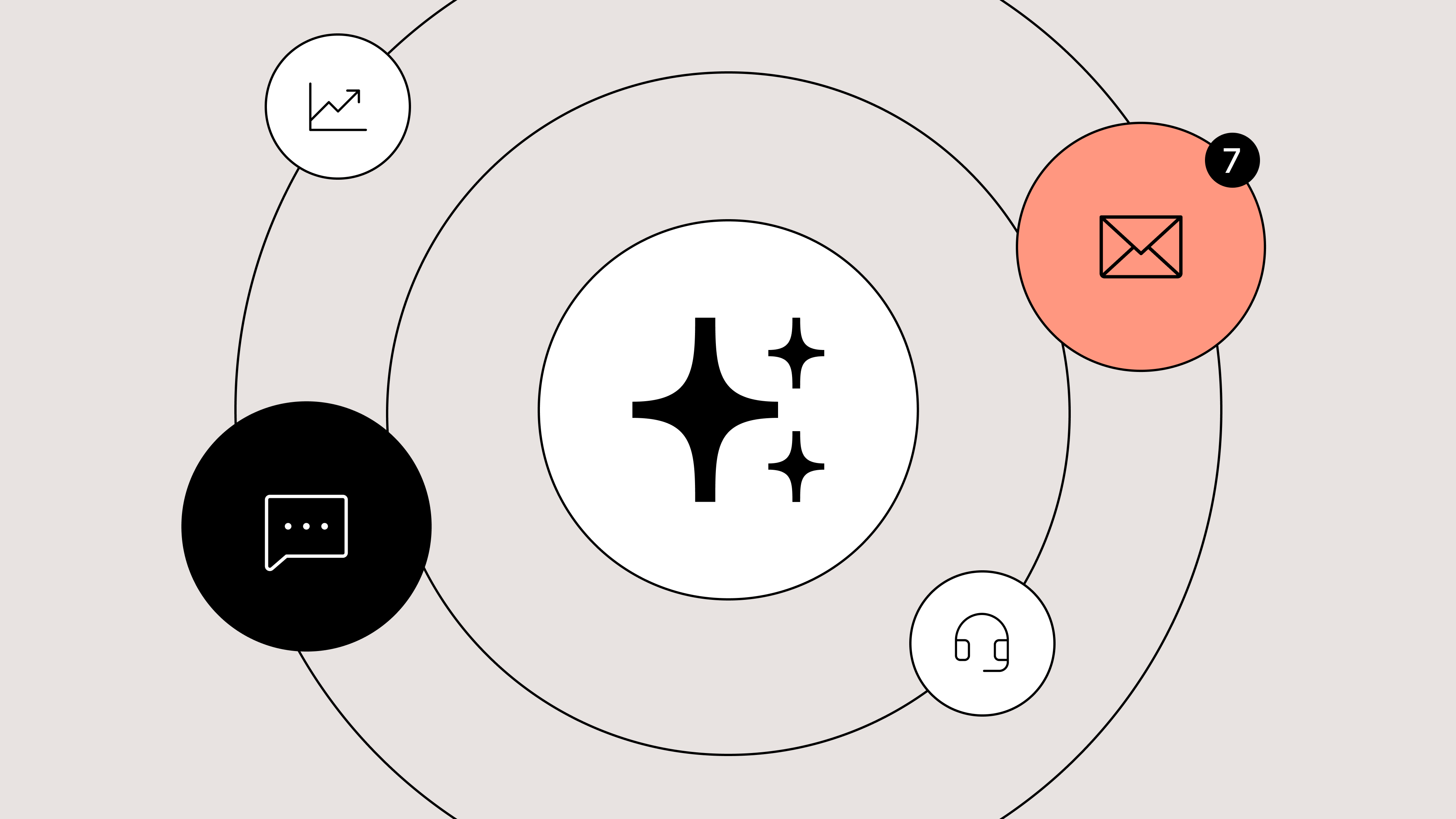
Best AI Helpdesk Tools: 10 Platforms Compared
TL;DR:
- The best AI helpdesks offer smart ticketing, self-service, and sales automation. They combine multi-channel support, give teams flexible AI control, and double as an upselling tool that drives revenue.
- Each tool has a unique strength. Gorgias is best for ecommerce brands , Zendesk offers enterprise-level customization, Intercom is great for SaaS engagement, and Tidio is easy for small teams.
- There are also standalone AI tools that integrate with existing helpdesks. Platforms like Ada, Siena, and Yuma offer automation without requiring a full platform switch.
- Advanced AI features vary in price and availability. Some are bundled, while others charge per resolution or limit access to higher tiers.
Every delayed reply, missed ticket, or frustrated customer costs more than just satisfaction—it hits revenue, loyalty, and your brand reputation. That’s why more and more brands are investing in AI helpdesks to automate the tedious parts of their job.
But with so many options on the market, choosing the right AI helpdesk can feel overwhelming. Should you prioritize conversational AI? Multi-channel support? No-code customization? Or pricing that scales with your team?
{{lead-magnet-1}}
We’ve reviewed the 10 best AI helpdesks available in 2025, evaluating them across AI capabilities, ease of use, integrations, analytics, and pricing.
Helpdesk |
AI Features |
Main Strength |
Potential Limitation |
Best For |
Starting Price |
|---|---|---|---|---|---|
Gorgias |
AI Agent, Shopping Assistant, Auto QA |
Multi-channel ecommerce support, AI shopping assistant |
Ecommerce-focused |
Scaling and enterprise ecommerce brands |
$10/month per agent |
Zendesk |
Copilot, AI triage, Zendesk QA |
Enterprise-grade omnichannel support |
Can be complex for smaller teams |
Large enterprises like banks and airlines |
$25/month per agent |
Intercom |
Fin AI, Fin Tasks, Fin Insights |
Conversational AI, proactive support |
Higher learning curve for complex workflows |
SaaS and mid-to-large businesses |
$39/month per agent |
Gladly |
Gladly Hero, Sidekick Chat, Sidekick Voice |
Conversation-centric support, loyalty focus |
Complex implementation onboarding process |
Customer-focused businesses that prioritize loyalty |
Custom pricing |
Kustomer |
AI Agents for Reps, AI Agents for Customers |
CRM-centric support |
Unintuitive and laggy user interface |
Mid-to-large enterprises |
$89/month per agent |
Tidio |
Lyro AI Agent |
Easy-to-use automation for small teams |
May not scale for large enterprise workflows |
Small to mid-sized ecommerce/service businesses |
Free, $29/month per agent |
Freshdesk |
Freddy AI |
Affordable multi-channel support |
Advanced AI limited to higher tiers |
SMBs and mid-market companies |
$18/month per agent |
Ada |
Ada Voice, Ada Email |
Self-service chat automation |
Basic features cost extra |
Large enterprise businesses |
$499/month |
Siena |
Customer Service Agent, Reviews Agent, Siena Memory |
Automated support |
Lack of visibility into support and AI performance |
Mid-market ecommerce and SaaS |
$500/month |
Yuma |
Support AI, Sales AI, Social AI |
Self-service & automation for growing teams |
Limited integrations with broader sales stacks |
Established ecommerce brands |
$49/month per agent |
How we evaluated the best AI helpdesks in 2025
To create this list, we evaluated each platform based on a combination of functionality, AI capabilities, usability, and industry applicability.
Our goal was to provide a resource that CX leaders, ecommerce managers, and support teams can rely on when choosing a helpdesk that fits their business needs.
Here’s how we approached the evaluation:
- Feature set assessment: Each tool was reviewed for its core helpdesk features, including ticket management, multi-channel support, workflow automation, and reporting capabilities.
- AI sophistication: Platforms were evaluated on the depth of their AI offerings. This included natural language processing (NLP), predictive analytics, proactive messaging, and automated resolution capabilities.
- Ease of use and setup: We considered setup time, onboarding complexity, and the learning curve for both agents and admins.
- Industry applicability: We examined which industries each tool serves best. Some platforms are tailored for ecommerce, while others are more enterprise or service-focused.
- Pricing transparency and scalability: We noted starting costs, AI feature availability by tier, and potential scaling considerations. Affordability and scalability were important, particularly for fast-growing teams that need to balance cost with AI functionality.
- Supporting resources: We reviewed customer support, integrations, documentation, and community resources. A strong helpdesk not only provides AI features but also ensures teams can implement and optimize them effectively.
By following this methodology, we created a balanced, objective view of each helpdesk, highlighting what makes them unique, their strengths, limitations, and who will benefit most from them.
The best AI helpdesks of 2025
Gorgias
Gorgias is an AI helpdesk designed for ecommerce brands, helping teams streamline support while boosting both efficiency and personalization.
By unifying all customer touchpoints—email, chat, social media, voice, and SMS—into a single dashboard, Gorgias allows support teams to manage interactions without toggling between platforms.
Unlike most helpdesks, its AI capabilities go beyond basic automation. In addition to support, its AI can influence sales by assisting, recommending, and upselling to customers based on their shopping behavior.
Best for: Scaling startups and mature ecommerce enterprises looking to expand support capacity without increasing headcount
Potential limitations: Gorgias is focused primarily on ecommerce brands, which means it may be less suitable for companies that don’t use ecommerce platforms.
Pricing: Starts at $10/month, with advanced AI features available as an add-on.
Main features:
- Automated ticket routing: AI triages incoming customer queries and assigns them to the right agent.
- AI-generated responses: Provides instant, context-aware replies to common questions.
- Sentiment analysis: Flags frustrated customers to prioritize urgent tickets.
- Multi-channel AI support: Integrates across email, chat, Shopify, social media, and 100+ ecommerce apps.
- Macros and workflow automation: AI suggests relevant responses and automates repetitive tasks.
AI features:
- AI Agent: Conversational AI that can update, refund, and replace orders, cancel/skip subscriptions, and even carry out custom-made actions.
- Shopping Assistant: A proactive AI tool that guides, upsells, and recommends products to shoppers through chat. It helps CX teams increase sales and AOV.
- Auto QA: Upgrades service quality by automatically evaluating 100% of private text conversations, whether handled by a human or AI. Each message is scored on metrics like Resolution Completeness, Brand Voice, and Accuracy.
Zendesk
Zendesk is a widely adopted AI helpdesk solution that caters to teams of all sizes, from small businesses to large enterprises. It’s known for its robust ticketing system, extensive integrations, and customizable workflows, making it a versatile choice for teams across industries.
Best for: Non-ecommerce enterprises and businesses like airlines and banks
Potential limitations: Advanced AI features and enterprise-level plans can be expensive for smaller teams, and some users report that customization for niche workflows can be time-consuming.
Pricing: Starts at $25/month per agent, with advanced AI features and enterprise options available on higher tiers.
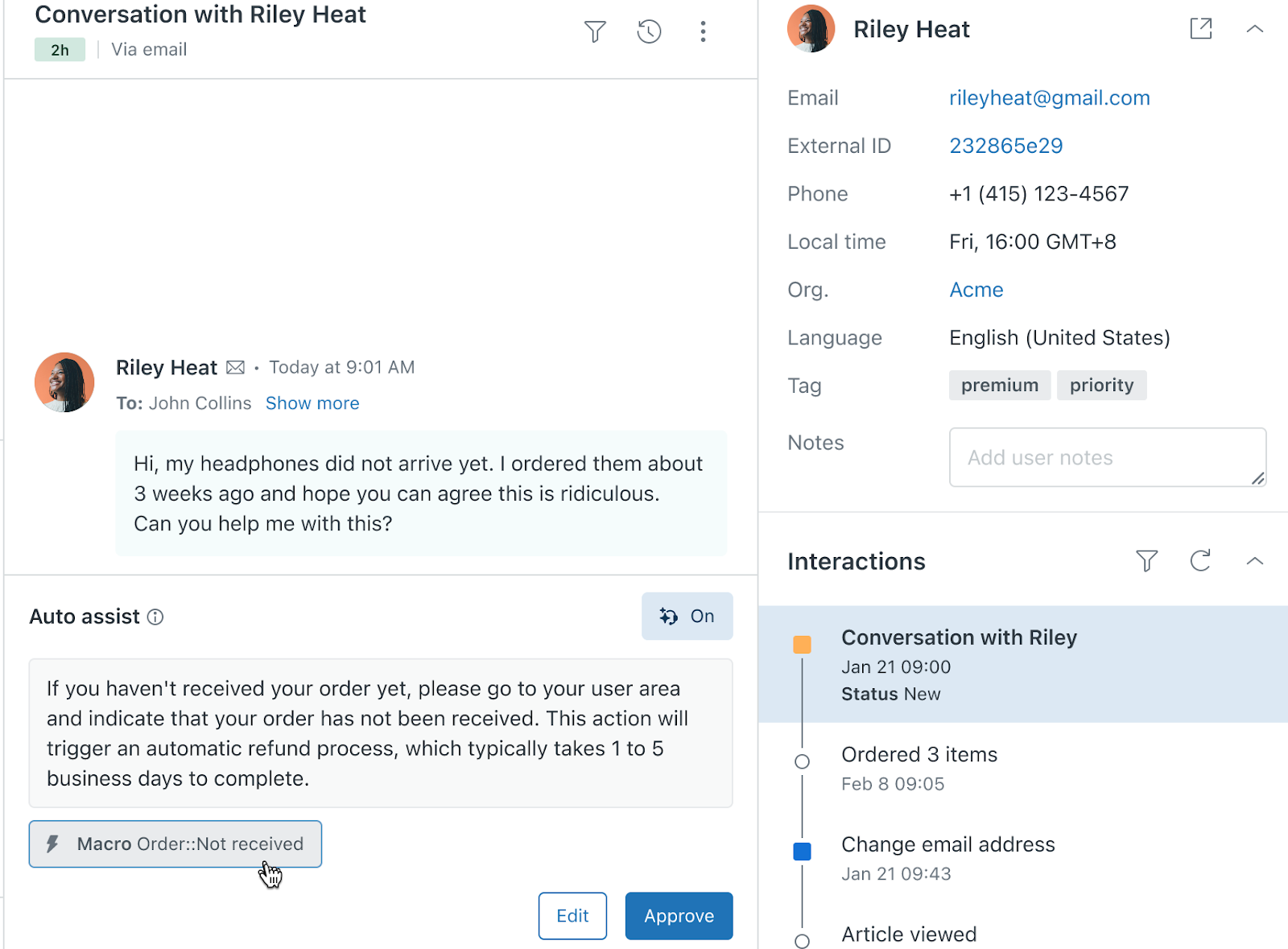
Main features:
- Unified ticketing: Centralizes requests from email, chat, phone, social media, and messaging apps.
- Macros and workflow automation: Automates routine responses and processes to reduce agent workload.
- Advanced analytics: Offers real-time dashboards and reporting to track support performance and customer satisfaction.
- Multi-channel support: Integrates seamlessly with major ecommerce, CRM, and communication platforms.
AI features:
- Copilot: Assists support agents in providing consistent replies, suggests next steps, and can even perform actions on agents’ behalf.
- AI triage: Automatically categorizes tickets and routes them to the appropriate team member.
- Zendesk QA: Scores the quality of interactions to help you get an overview of support performance.
Intercom
Intercom combines live chat, messaging, and AI automation into a single platform that focuses on proactive customer engagement. Its conversational AI makes it easy for teams to interact with customers in real time, while its automation tools help reduce response times and increase efficiency.
Best for: SaaS companies, software companies, and mid-market teams
Potential limitations: Companies looking for a plug-and-play AI solution will need to invest time in setting up Intercom. Customers report a steep learning curve when creating workflows, organizing users, and implementing new automations.
Pricing: Starts at $39/month per seat. Fin AI is available as a standalone product for $0.99 per resolution (50 resolutions per month minimum) if you have an existing helpdesk.
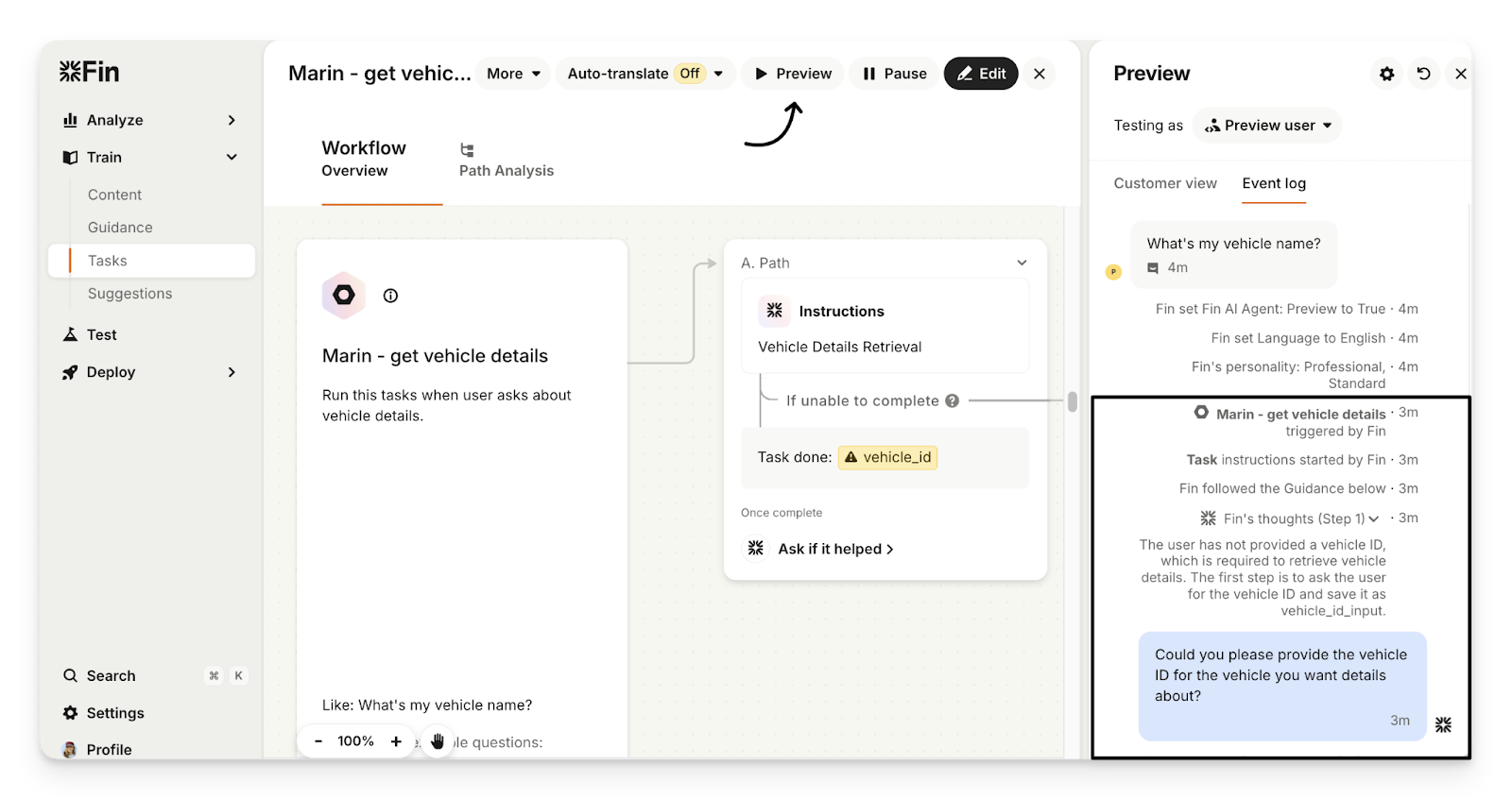
Main features:
- Live chat and messaging: Provides instant support via website, mobile apps, and email.
- Inbox and workflow management: Centralizes customer conversations and automates repetitive tasks.
- Customer segmentation: Enables targeted messaging based on behavior, subscription plans, or engagement levels.
AI features:
- Fin AI: Intercom’s AI assistant responds to common questions, freeing agents to handle complex issues.
- Fin Tasks: Performs actions like retrieving order details, processing refunds, reorders, and more.
- Fin Insights: Provides a deep look into recurring trends and issues across conversations.
Gladly
Gladly is a customer service platform built around the concept of conversation-centric support, treating every customer interaction as a continuous dialogue rather than isolated tickets.
Best for: Customer-focused brands that prioritize personalized, ongoing conversations over transactional support—especially retail, financial services, and subscription businesses that want to strengthen loyalty.
Potential limitations: Smaller teams may find it more than they need, and advanced customization can require professional services.
Pricing: Available on request, with plans typically tailored to enterprise support teams and scaled based on users and features.
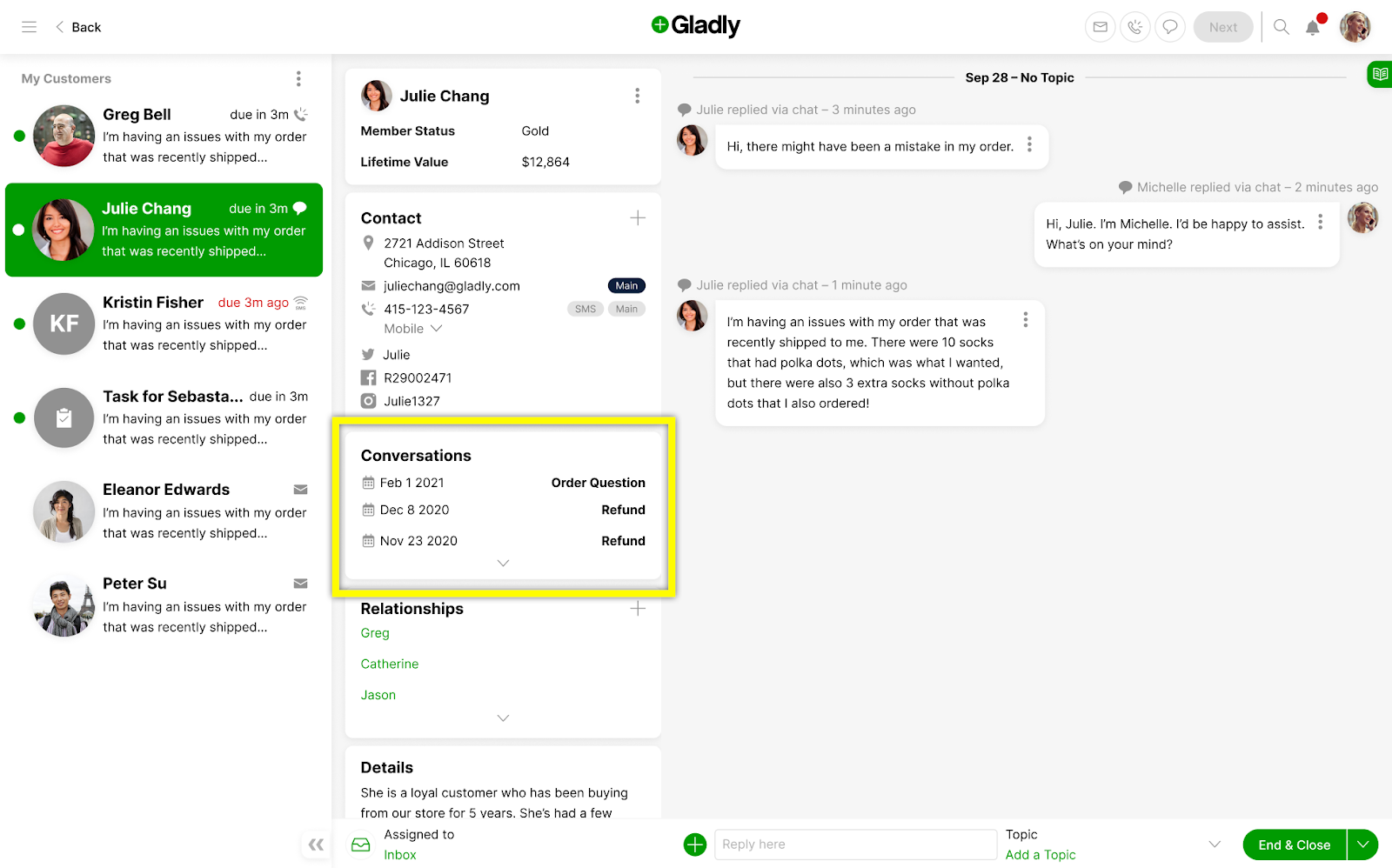
Main features:
- Unified customer timeline: Combines all interactions—email, chat, social, SMS—into a single, chronological view.
- Personalized workflows: Tailors automation and routing to individual customer needs.
- Team collaboration tools: Enables seamless handoffs and internal notes for faster issue resolution.
AI features:
- Gladly Hero: Customer profiles created from conversations that include preferences, relationships, and purchase history.
- Sidekick Chat: Instant answers to requests like returns, account updates, and refunds.
- Sidekick Voice: Real-time, AI-powered phone support with SMS follow-ups.
Kustomer
Kustomer is a CRM-centric AI helpdesk that integrates customer support and relationship management in one platform. Its AI capabilities allow teams to automate repetitive tasks, route tickets intelligently, and gain insights into customer history, making it ideal for businesses with complex support workflows.
Best for: Mid-to-large enterprises that prioritize powerful, custom reporting
Potential limitations: Users report an unintuitive and laggy interface, which can slow down large support teams that handle high support volumes.
Pricing: Starts at $89/month per seat, with AI features available as add-ons.
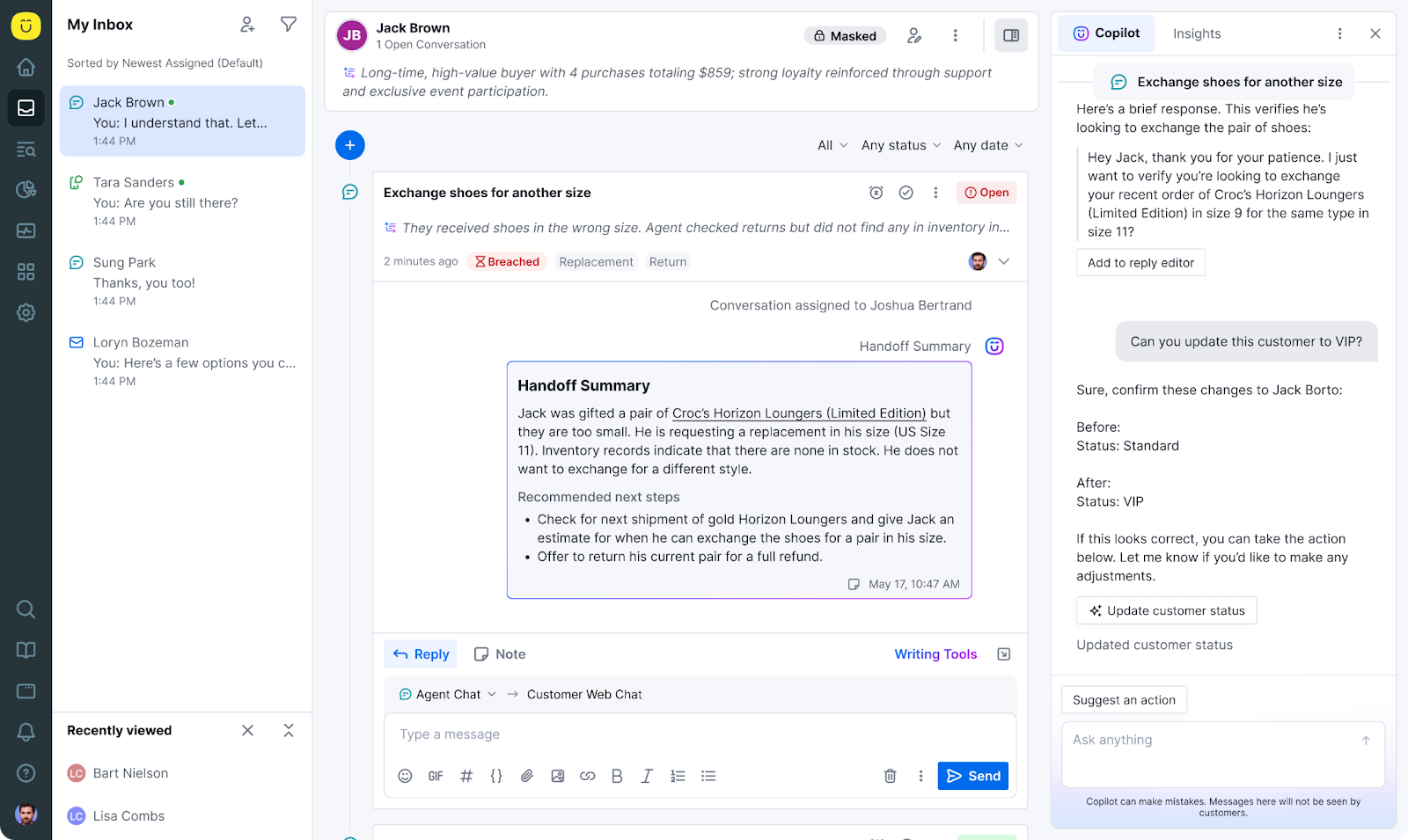
Main features:
- Unified customer profiles: Consolidates all interactions, purchases, and support history in one view.
- Workflow automation: Streamlines processes with rules-based ticket routing and escalation.
- Advanced reporting: Tracks key support metrics and agent performance.
AI features:
- AI Agents for Reps: Offers real-time assistance, from drafting responses to updating records and summarizing conversations.
- AI Agent for Customers: Allows the creation of multiple AI Agents for specialized tasks.
Tidio
Tidio is an AI-powered live chat and messaging platform built for small to mid-sized businesses looking to combine automation with personalized support. Its ease of setup and affordability make it a strong choice for teams new to AI helpdesks.
Best for: Small to mid-sized ecommerce or service-based businesses looking for an easy-to-use AI chat solution to automate FAQs
Potential limitations: May not scale well for large enterprise businesses.
Pricing: A free plan is available, with paid plans starting at $29/month per agent and AI features as add-ons.

Main features:
- Live chat and messenger integration: Supports website chat, email, and social messaging.
- Drag-and-drop chatbot builder: No coding required to deploy automated responses.
- Ticket management: Organizes queries for quick resolution by agents.
AI features:
- Lyro AI Agent: Conversational AI that answers questions based on support content.
Freshdesk
Freshdesk is a helpdesk platform that combines AI automation, omnichannel support, and workflow management. It’s known for ease of use and affordability, making it popular among SMBs and mid-market companies.
Best for: SMBs and mid-market companies looking for an affordable, easy-to-implement AI helpdesk
Potential limitations: Some advanced AI functionality is limited to higher-tier plans. Large enterprises may require additional configuration to fully leverage AI features.
Pricing: Plans start at $18/month per agent, with AI capabilities and advanced automation available on higher tiers.
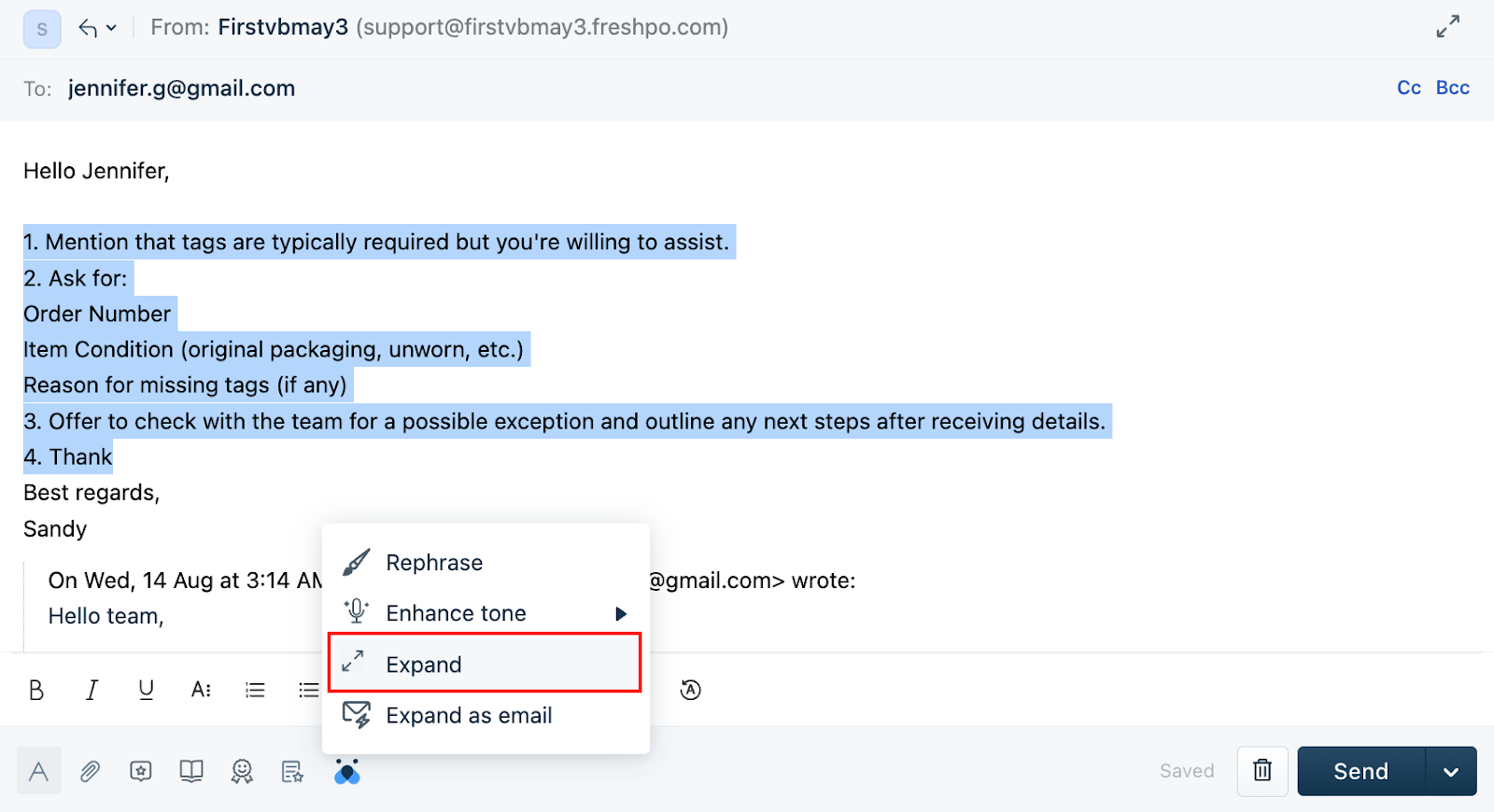
Main features:
- Multi-channel ticketing: Consolidates email, chat, phone, and social support.
- Automation and workflows: Rules and macros automate repetitive tasks.
- Analytics and reporting: Provides insights into performance and customer satisfaction.
AI features:
- Freddy AI: Fetches order details, resolves questions, updates customer profiles, and more using approved data.
Standalone AI tools you can integrate with existing helpdesks
Not ready to move helpdesks? These standalone AI tools plug into your existing helpdesk to add automation, self-service, and conversational support.
Ada
Ada is focused on conversational automation, enabling teams to provide self-service solutions that reduce ticket volume while improving response times.
Its no-code interface makes it accessible for non-technical teams, and its AI capabilities allow for personalized customer interactions at scale.
Best for: Large enterprise businesses looking to reduce support tickets through chat-based support
Potential limitations: Basic features that are free on competitor platforms cost extra on Ada, which limits smaller businesses looking for an all-in-one solution.
Pricing: Starts at $499/month for essential AI features. Higher-tier plans are available on request.
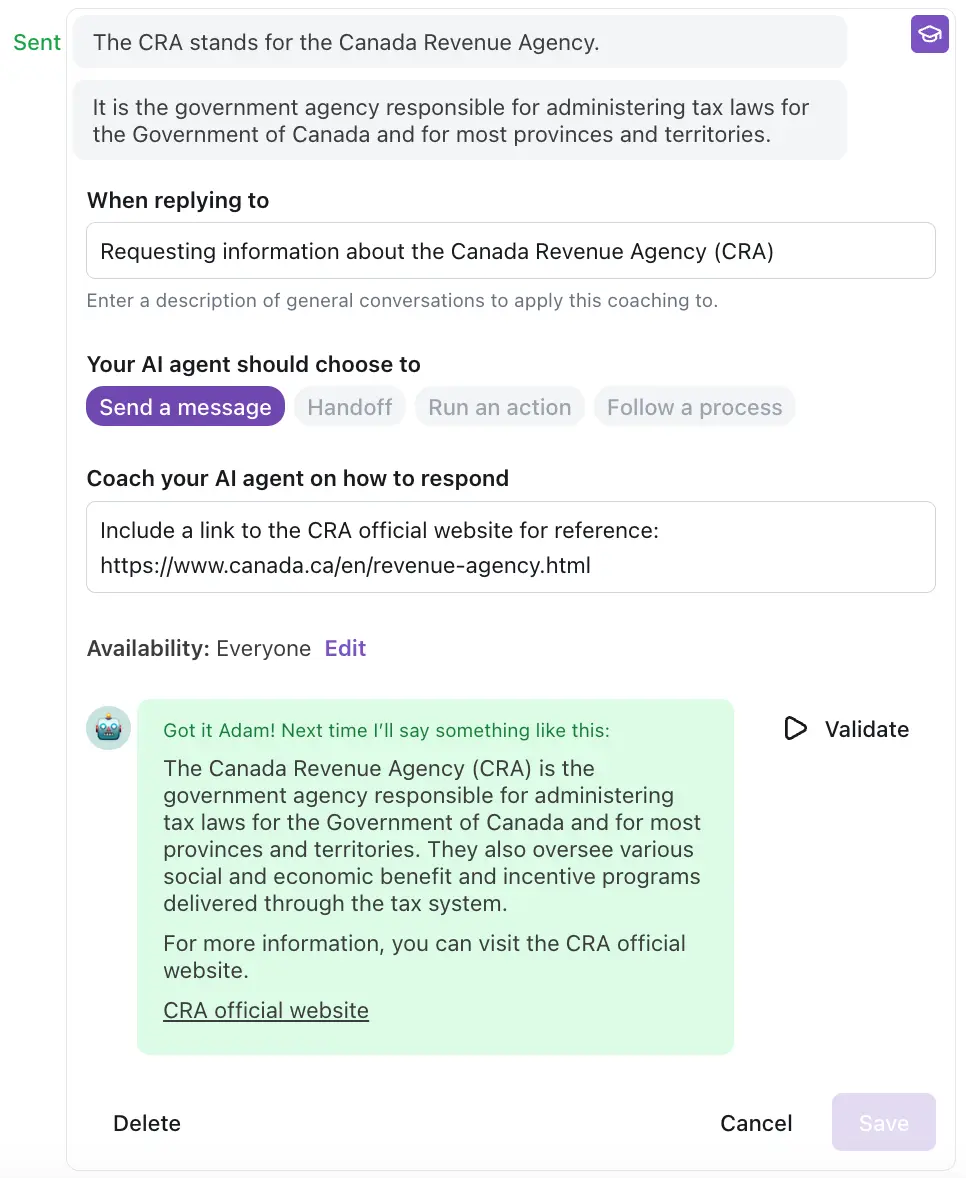
Main features:
- No-code chatbot builder: Quickly design and deploy AI chatbots across web, mobile, and messaging apps.
- Ticket deflection: Automates repetitive queries to reduce human agent workload.
- Multi-language support: Offers conversational support in multiple languages to serve global audiences.
AI features:
- Ada Voice: AI-powered phone support that can respond to customers, take action, and escalate issues in real-time.
- Ada Email: Instant, personalized replies for email threads with the ability to hand off to agents.
Siena
Siena is focused on providing automated support for rapidly growing ecommerce and SaaS brands. With an emphasis on efficiency and self-service, Siena helps teams reduce ticket volume and respond faster, while giving managers visibility into performance metrics.
Best for: Mid-market ecommerce and SaaS companies that want to combine automation with insights
Potential limitations: Lacks clear visibility into AI performance, which can keep support teams in the dark about support performance and customer satisfaction.
Pricing: Starts at $500/month with automated tickets at $0.90 each.

Main features:
- Omnichannel support: Handles email, chat, and social media from a single dashboard.
- Custom workflows: Automates repetitive tasks and ticket routing based on rules and customer data.
- Reporting and analytics: Tracks support KPIs and team performance in real time.
AI features:
- Customer Service Agent: Provides contextual, automated responses for common queries.
- Reviews Agent: Responds to every customer review with personalized feedback.
- Siena Memory: Stores key details from customer interactions and turns them into insights reports.
Yuma
Yuma is focused on conversational automation and self-service solutions. It is designed to reduce agent workload while providing fast, personalized responses, making it appealing to growing ecommerce teams.
Best for: Established ecommerce brands looking to integrate sophisticated conversational AI alongside their current helpdesk
Potential limitations: Limited integrations with broader sales stacks mean brands prioritizing sales will have a hard time creating a smooth workflow.
Pricing: Starts at $350/month for 500 resolutions, with higher-tier plans for more resolutions.

Main features:
- Omnichannel support: Handles chat, email, and social messaging from one platform.
- Self-service portals: Allows customers to resolve common issues independently.
- Workflow automation: AI assists with repetitive tasks and ticket routing.
AI features:
- Support AI: Replies to customers on email, WhatsApp, SMS, and social media using your brand’s voice.
- Social AI: Instant responses to social media comments, DMs, and tags.
- Sales AI: Guides shoppers to the relevant product and tracks bestsellers.
What features to look for in a good AI helpdesk
The best AI helpdesk makes support efficient, personalized, and scalable.
Here’s a quick checklist of what to look for when evaluating an AI helpdesk:
- Smart ticket management
- Self-service workflows
- Multi-channel support
- Sales and upselling capabilities
- User-friendly AI controls
- Performance insights
- AI learning and improvement
|
Feature |
What It Is |
Benefit to CX Team |
|---|---|---|
|
Smart ticket management |
AI that deflects repetitive tickets and routes complex issues to agents via macros, recommendations, and copilots |
Frees up time for higher-value tasks like customer retention and streamlined experiences |
|
Self-service workflows |
Automated execution of order edits, address changes, refunds, and cancellations—whenever customers ask |
Eliminates time spent on repetitive requests while offering 24/7 support |
|
Multi-channel support |
All-in-one platform consolidating email, chat, SMS, social media, and phone interactions |
Eliminates the need to switch between platforms while giving customers a variety of contact options |
|
Sales and upselling capabilities |
AI that analyzes shopper behavior and delivers targeted assistance, product recommendations, and offers |
Maximizes revenue impact for CX teams by directly influencing customer buying decisions |
|
User-friendly AI controls |
Intuitive tools and toggles for adjusting AI behavior through knowledge bases |
Allows teams to test and deploy AI quickly without technical expertise |
|
Performance insights |
Dashboards displaying performance metrics, support KPIs, revenue impact, plus custom reporting |
Maintains support quality while providing scalable insights that grow with your business |
|
AI learning and improvement |
Quality assurance features that improve AI through feedback, corrections, and knowledge updates |
Enables accurate responses that lead to consistent support quality and increased customer satisfaction |
Key takeaways from our review
The future of customer support is AI-driven, and the tools you choose today will define the efficiency, responsiveness, and satisfaction of your support team tomorrow.
If it's still early in your AI helpdesk journey, we have additional resources to help you learn more from the pros before getting started:
Further reading

Grow Your Business with Conversational AI: Insights from Glamnetic & Audien Hearing
TL;DR:
- Glamnetic eliminated over 15,000 repetitive responses with AI, letting their team focus on complex customer needs and sales opportunities.
- Audien Hearing found their AI support was matching or beating human performance, with faster responses and better conversion rates.
- AI turned out to be more than just a time-saver—it became a serious revenue generator by engaging shoppers in real-time and driving sales.
- This is just the beginning for AI in customer experience. AI will transform everything from personalized recommendations to proactive sales and marketing.
The AI revolution in ecommerce customer support is already here. 77% of service teams are already using AI, and 92% say it improves time to resolution.
Brands that embrace AI can improve efficiency, scale faster, and deliver better customer experiences.
But what does that look like in practice?
In a recent Grow Your Business in 2025 with Conversational AI webinar, Kevin Gould, co-founder of Glamnetic, and Zoe Kahn, owner of Inevitable Agency & former VP of Retention and CX at Audien Hearing, shared how their teams use Gorgias AI Agent to streamline support, reduce workloads, and convert more shoppers into customers.
For them, AI isn’t just hype, it’s delivering real results—and Kevin and Zoe have seen it firsthand.
Ahead, we’ll break down Kevin and Zoe’s firsthand experiences, covering:
- How AI helped Glamnetic reduce manual responses by 15,000–16,000 tickets
- How AI-powered responses helped Audien Hearing capture more revenue
- The biggest misconceptions about AI in customer support—and why they’re wrong
- What AI-driven CX will look like in 2025 and beyond
Watch the full webinar replay here:
How AI reduces 16,000 manual tickets and scales CX
As ecommerce brands grow, so does the demand for fast, high-quality customer support. But hiring and training more agents isn’t always scalable—especially when a significant portion of support tickets are repetitive, like “Where’s my order?” or “How long does shipping take?”
That’s where AI comes in. Instead of bogging down human agents with routine questions, AI-powered support can handle high ticket volumes instantly, freeing up CX teams to focus on complex issues, relationship-building, and revenue-generating conversations.
Both Glamnetic and Audien Hearing have seen firsthand how AI can transform CX. Glamnetic reduced manual responses by 15,000–16,000 tickets, while Audien Hearing saw AI outperform some human agents in both response speed and upselling.
Related reading: How to build an effective AI-driven customer support strategy
How Glamnetic uses AI to cut manual responses by 25%
As Glamnetic scaled, so did its customer support workload. Managing tens of thousands of tickets while maintaining fast, high-quality support became a challenge. Many of the inquiries Glamnetic receives are repetitive––think order updates, shipping questions, and product details.
The brand needed a way to streamline responses without losing the personal touch.
Here’s what made the difference: Glamnetic used AI Agent to automate responses for thousands of tickets, allowing human agents to focus on higher-value interactions that drive customer loyalty and sales.
Kevin Gould, co-founder of Glamnetic, was excited about infusing AI across the entire business. “CX felt like the first natural extension. A big part of that was [Gorgias] pushing us into it pretty quickly. We saw early on that AI could be a force multiplier for the business."

The results speak for themselves:
- 15,000–16,000 fewer manual responses—freeing up agents for more complex cases.
- Faster response times, improving the overall customer experience.
- Smarter AI-driven sales, turning support inquiries into revenue opportunities.
Read more: How Glamnetic uses AI Agent to handle 40% of Support Volume with "mind-blowing" results
"What’s really interesting is that AI handled 24% of tickets across the entire year…Now, we’ve gotten much smarter about how we deploy AI for revenue generation, and it’s been highly impactful. It’s well worth your time to deploy this across your company." —Kevin Gould, Co-founder, Glamnetic
How Audien Hearing scaled support without adding headcount
Scaling customer support while keeping costs in check is a challenge for any fast-growing ecommerce brand—especially one focused on retention and long-term customer relationships.
For Audien Hearing, this meant managing a team of over 80 support agents while ensuring that every interaction added value to the customer experience.
Rather than endlessly hiring more agents, Audien Hearing turned to AI to optimize. AI Agent helped them handle high ticket volumes faster, without sacrificing quality. With AI handling routine inquiries, their team was able to focus on higher-value conversations that drove long-term growth.
Zoe Kahn, former VP of Retention & CX, notes the importance of efficiency when managing large teams, “Once you reach that scale, you have to figure out how to be efficient and adapt to the right tools. AI helped us a lot. That said, it’s not a magic button. It takes training and adjustment. Adopting AI with Gorgias has allowed our team to focus on the tasks that truly need a human touch."
The impact was undeniable:
- AI became one of Audien Hearing’s fastest agents, reducing response times.
- Support scaled without adding headcount, optimizing costs.
- AI-driven interactions increased revenue by converting browsing customers in real-time.

Read more: How Audien Hearing increased efficiency for 75 agents and reduced product returns by 5%
"[AI Agent] ended up being one of our fastest agents—answering the most tickets and driving the most revenue. A lot of that revenue was potentially missed revenue because these were customers sitting on the site, asking questions about the products, and wanting an answer now so they could purchase…Now, AI can answer those questions immediately and convert those customers." —Zoe Kahn, former VP of Retention & CX, Audien Hearing
Initial AI skepticism and common concerns
AI in customer support still raises eyebrows. Some brands worry about losing the human touch, while others fear AI will replace agents rather than support them.
Even Zoe Kahn was initially skeptical about AI’s role in customer experience:
"I wasn't fully convinced at first—I wanted humans talking to my customers. But as soon as I saw it working well, and just as great as some of my agents, if not even better because of faster responses, and we're having agents train it... it's much easier now with a bunch of wins.”
What changed? Seeing AI in action—handling repetitive, time-consuming tasks like order tracking and FAQs, while human agents focused on complex cases, upselling, and retention.
For Kevin Gould, AI wasn’t brought in to cut costs but to help the CX team work smarter, not harder:
“We try to think a lot about how to work smarter, not harder. On one end of the spectrum, there's a lot of tedious, repetitive emails that can be automated right off the jump. Then as you move up the stack, from servicing up to generating revenue, it starts to get really interesting. If our ultimate goal is to provide customers with the best experience possible, then why not free up our agents from tedious tasks and double down on the things that push us towards that goal?”
The key takeaway? AI isn’t automation just for the sake of automation. It’s for scaling smarter and freeing up CX teams to have the right conversations at the right time.
Related reading: How to automate half of your CX tasks
What’s next for AI in ecommerce CX in 2025?
AI in ecommerce customer support started as a cost-saving tool and is now proving to be a revenue driver. Looking ahead to 2025, AI’s role in personalization, proactive selling, and marketing integration will only grow.
For Zoe Kahn, the future of AI involves building stronger customer relationships:
"Take time to create community with your customers. Have the ability to think not only about revenue driving but also customer retention. Every time you have an opportunity to talk to a customer, take it. If teams don't have that time that could be freed up from training an AI agent, we see them rushing through replies that could really ruin their relationships with customers."
This shift toward AI-powered personalization is something Kevin Gould is already seeing in action. He predicts AI will become a key player in conversational selling, guiding customers to the right products at the right time:
"Eventually, we'll get to a place where AI is going to become a great recommendation engine. If we sell press-on nails, and a consumer has bought a few different styles in the past, AI can quickly pivot into conversational selling."
Beyond support, Kevin also believes that AI is blurring the lines between CX and marketing. As brands gain deeper insights into customer behavior, AI-powered support will help fuel marketing campaigns, drive retention, and create highly personalized experiences:
"If I asked [my support agent] how she sees her job, she’d say it started four years ago as customer service, then evolved into customer experience. Over time, different layers of customer experience emerged to the point where it's now an integrated marketing role.
She's collaborating closely with marketing specialists—growth marketing, brand marketing, and more. At this point, this role is almost like an extension of the marketing team...It requires a balanced mindset that blends marketing expertise with a deep understanding of customer experience to be successful."
Related reading: 6 ways to increase conversions by 6%+ with onsite campaigns
Why 2025 is the year to embrace AI in CX
In 2025, AI will go beyond responding to customers. It will anticipate their needs, personalize their journey, and turn support into a revenue-generating powerhouse.
As Kevin Gould and Zoe Kahn shared, brands that embrace AI free up their teams to focus on high-impact conversations that build loyalty and boost sales.
From Glamnetic reducing 15,000+ manual responses to Audien Hearing’s AI-powered revenue wins, the results speak for themselves. AI helps brands personalize support, engage customers in real-time, and even drive conversational selling.
Ready to see how many routine tickets you could automate? Book a demo to see AI Agent in action.
{{lead-magnet-1}}

Meet Auto QA: Quality Checks Are Here to Stay
TL;DR:
- Manual QA is time-consuming—Auto QA does the heavy lifting. It frees up team leads by automatically reviewing conversations with accuracy and consistency, so they can focus on improving support.
- Auto QA scores 100% of private text conversations, whether handled by a human or Gorgias AI Agent. It evaluates support quality based on Resolution Completeness, Communication, and Language Proficiency.
- Auto QA supports multiple languages but provides feedback in English. It can assess tickets in any language supported by OpenAI’s GPT-4, ensuring global teams can benefit from automated QA.
- Start with individual meetings before a team-wide rollout of Auto QA. One-on-one conversations help address specific agent concerns and ensure a smooth transition.
Customer satisfaction scores (CSAT) have long been the go-to metric for measuring support quality, with 53% of customer experience leads relying on them. However, CSAT only tells you part of the story.
When customers rate their experience 3 out of 5, what does it really mean? Did they rate the agent’s actions or the company’s policies? Was an agent helpful or inefficient? Did they take unnecessary steps to get to the answer?
Quality assurance checks can fill these gaps, but manual QA is a heavy lift. Team leads often struggle to review more than a small sample of conversations, leaving many issues unchecked.
Auto QA redefines quality assurance for today’s support teams. It transforms QA from a manual task into an automated feedback engine that helps your team deliver excellent support, every single time.
Let's dive into how Auto QA works, how accurate its scoring is, and how you can add it to your support workflow to start improving customer conversations today.
What is Auto QA?
Gorgias Auto QA upgrades the customer service QA process by automatically evaluating 100% of private text conversations, whether handled by a human or AI Agent.
Each message is scored on metrics like Resolution Completeness, Brand Voice, and Accuracy, helping teams fix and address areas of improvement.
With an automated QA process, brands can:
- Save time: Automated quality checks help team leads focus on the most critical tickets.
- Ensure consistency: Both human agents and AI Agent are evaluated with a unified, comprehensive quality score.
- Boost performance: Agents can receive targeted coaching to provide more consistent customer experiences.
- Meet customer expectations: Customers benefit from higher-quality support with quicker resolutions and accurate responses.
How Auto QA works
Let's explore a real-life scenario: A customer reaches out about a product issue, seeking troubleshooting help. Here’s how the interaction unfolds:
Customer: "Hi, my device broke, and I bought it less than a month ago. -Kelly"
Support Agent: "Hi Kelly, please send us a photo or a video so we can determine the issue with your device. -Michael"
The ticket is eventually closed, but the customer doesn't leave a CSAT score.
In this case, Auto QA would provide the following insights:
- Communication Score: 3/5. Reason: The agent's wording could benefit from more empathy.
- Resolution Score: "Complete". Reason: The agent effectively addressed the customer's concerns.

How accurate is Auto QA’s scoring?
Auto QA uses a comprehensive scoring system that evaluates conversations on communication proficiency and knowledge accuracy.
To ensure accuracy, Auto QA only scores interactions with at least 250 characters and messages from both agents and customers. It's also smart enough to filter out automated responses, spam, and bot messages.
Auto QA automatically scores three main aspects:
- Resolution Completeness: Did the agent solve everything the customer asked about? This area is scored with a "Complete" or "Incomplete.” For instance, it correctly marks a ticket as "Complete" when a customer resolves their issue or when there's no clear question to address.
- Communication Quality: How well did the agent listen and show empathy? Uses a 1-5 scale, looking at how well your agents acknowledged a customer’s concerns and communicated the solution.
- Language Proficiency: Did the agent communicate properly? Uses a 1-5 scale to check spelling, grammar, and syntax.
For deeper feedback, certain criteria require manual scoring from team leads:
- Accuracy: How accurate was the information provided by the agent?
- Efficiency: How quickly did the agent handle the ticket? How well did they minimize the number of follow-ups?
- Internal Compliance: How closely did the agent follow your team’s internal processes and brand guidelines?
- Brand Voice: How well did the agent use brand vocabulary, greetings, sign-offs, and tone of voice?

How to integrate Auto QA into your workflow
Whether you're just starting with quality checks or transitioning from manual QA, Auto QA can seamlessly fit into your existing processes. Here's how to get started.
1. Set your standards
What does “good” look like for your team? Review Auto QA's scoring system and decide which metrics matter most for your brand, from Resolution Completeness to Brand Voice. This will help you set realistic targets for your team to work toward.
Tip: Start by prioritizing a couple of areas. This could look like prioritizing a 5/5 Resolution Completeness score while deprioritizing Brand Voice. As your team gets comfortable with Auto QA, you can ramp up to improving Brand Voice.
2. Agree on a scoring system
Since some criteria—Accuracy, Efficiency, Internal Compliance, and Brand Voice—require manual scoring, it’s best to agree on how your team will use the scoring scale.
For example, each score from 1 to 5 receives a distinct piece of feedback. Here’s what that would look for the Efficiency criteria:
- 1/5 stars: Excessive back-and-forth that could have been avoided
- 2/5 stars: Resolution took longer than necessary due to poor process
- 3/5 stars: Average handling time with some unnecessary steps
- 4/5 stars: Quick resolution with minimal back-and-forth
- 5/5 stars: One-touch resolution
3. Prepare your agents
Start rolling out Auto QA through individual meetings with agents rather than overwhelming your team with a general training session. One-on-one conversations allow you to better address each agent's specific questions and concerns. Make sure to cover the following:
- Explain that Auto QA is meant to help make conversations consistent, not police agents
- Explain the scoring criteria and what each score means
- Highlight which criteria agents should prioritize
If regular one-on-one meetings aren't part of your routine, consider introducing Auto QA during your weekly team meetings or through a dedicated training session. Just remember to leave plenty of time for questions and walk through multiple examples to ensure everyone is comfortable with the system.
4. Establish a review schedule
To solidify QA checks, create a simple routine for reviewing Auto QA insights with the Auto QA Report (navigate to Statistics > Auto QA).
- Weekly: Do a quick check of automated scores.
- Monthly: Analyze trends and patterns across conversations.
- Quarterly: Review and adjust quality benchmarks.

5. Act on insights
Once you’ve collected a substantial amount of Auto QA data, there are a few follow-up actions you can take to continue having high-quality conversations:
- Set the example by sharing high-scoring conversations in your team meetings.
- Coach agents individually by reviewing their tickets together. Celebrate high-scoring conversations and provide targeted feedback on areas for improvement. This immediate, personalized approach helps agents grow faster than general training sessions.
- Increase product and policy knowledge by refining internal guidelines on brand voice, escalation processes, and more.
Remember, Auto QA works alongside your existing processes—it doesn't replace them. Start small, focus on the metrics that matter most to your team, and scale up as you get comfortable with Auto QA.
Brands are excited about the power of Auto QA
We invited leading ecommerce brands to beta test Auto QA, and their feedback highlights how it's transforming quality assurance across support teams of all sizes.
amika's support team values the complete visibility beyond CSAT: "Auto QA dramatically widens the volume of tickets we can review," they share. "A 5-point scale only tells you so much, and relying on consumers providing feedback limits what you're able to learn from."
Peachybbies' CX team enjoys real-time improvement: "Being able to give real-time feedback is pivotal, especially during peak times," their team explains. "Auto QA catches pretty much everything I'd want a human QA agent to catch."
OSEA Malibu's managers discovered operational insights: "It helps managers understand when a macro or process is leading to incomplete conversations versus when an agent made a mistake," their support lead shares.
Bring quality into every conversation with Auto QA
By prioritizing QA, your team can identify potential problems early, reduce errors, and improve overall performance, leading to a smoother, more reliable experience for customers––and your CX team.
In the long run, brands focusing on QA can gain a competitive edge. Book a demo now to see what Auto QA can do for you.
{{lead-magnet-1}}

5 CX Metrics To Track in 2025: A Guide for Managers
There are tons of CX metrics you could be tracking. But where you spend your time is crucial as a customer experience leader.
According to recent data, these are the top five CX metrics for you to prioritize and improve on in 2025.
{{lead-magnet-1}}
Why CX metrics are essential for success
Not tracking CX metrics is like putting a loaf of bread in the oven but leaving baking time to chance. Without a set timer, you could end up with an underbaked bowl of dough or a burnt mess. Unless you have a sixth sense, it’s going to be really challenging to end up with something good.
In the same vein, metrics provide clear parameters for success. Meet or exceed them and your team is doing well; fall short and you’ll be better equipped to identify pain points and solve them.
Here are a few additional reasons why setting customer support metrics is key to success.
- Measure success and ROI. By tracking KPIs like resolution time, first response time, and CSAT, you can gauge the health of your customer support program and potentially justify investments in CX initiatives in the future.
- Identify customer and team pain points. Metrics help uncover areas where customers or your team is struggling. For example, high resolution times or low CSAT scores signal friction in the experience that you can address.
- Create accountability within your team. When everyone on your team understands what success looks like, it aligns efforts and keeps everyone focused on shared goals.
- Prioritize resources. Metrics guide CX leaders on where to allocate resources—for example, leveraging AI and automation to tackle repetitive tickets when ticket volume adds up or resolution times are getting high.
- Get proactive. Metrics reveal trends in customer behavior which can help you predict customer needs and make proactive adjustments in your CX strategy. By monitoring customer sentiment and acting on feedback, CX leaders can create more personalized and positive experiences.
Tip : AI and automation can be valuable sidekicks as you look to optimize and improve on metrics. That’s especially true for busy periods: in 2024, 70% of CX leaders relied on AI and automation during peak seasons.

Resolution time should be your main focus for 2025
Customers are done with being patient. One study found that two thirds of respondents valued speed to reply just as much as product price.
A recent survey we ran found the same thing.
In our 2024 customer expectations survey, we asked CX leads and agents which metric they used to track success. Here’s what they said:
- Resolution Time (71%)
- First Response Time (59%)
- CSAT (53%)
- Revenue or Sales Impact (41%)
- Ticket Volume (41%)
Resolution time is going to be a key differentiator for your team this year. It should be your primary focus when it comes to optimizing different facets of your customer service strategy.

Top 5 CX metrics for 2025 & how to improve them with AI
1) Resolution time
Resolution time is the average time it takes to resolve a customer request from start to finish.
How do you calculate resolution time?
To calculate resolution time, you’ll take the total resolution time within a set period and divide it by the total number of customer interactions your team tackled within that same time frame.
Average resolution time = Total resolution time in a defined period / Total number of customer interactions resolved in that period
How to use AI & automation to improve it
According to a 2023 study from Statista, 70% of support leaders noted that the customer support metrics that AI had the greatest positive effect on was resolution time.
You can use automation features to send Macros to answer common questions, or leverage AI to interact as an agent via email or chat. The instant nature of these tools means that customers won’t have to wait in a queue for your team to get to them.
For example, Wildride implemented Gorgias AI Agent to manage an influx of 1,000 tickets per week. After AI Agent took over 33% of email inquiries, the team saw a 24% decrease in resolution time. That allowed the team to focus on more complex issues, streamline their support process, and make their customers happier.
2) First Response Time (FRT)
First response time is the length of time it takes for a customer service team to send the initial reply to a customer inquiry.
How do you calculate first response time?
To calculate average first response time, take the total amount of time it took for your team to respond to initial customer requests and divide by the total number of tickets within a set time frame.
How to use AI & automation to improve it
Your team is busy––when they’re not tackling repetitive questions, they’re helping customers with complicated or high-effort requests. All of that work is going to bog down your FRT, especially during more buzzy periods like sales, new releases, or over the holidays.
By using AI to jump in to handle those more routine requests, you can significantly reduce your FRT and give your team time back to tackle more heavy-lift needs.
For example, AI Agent helped Glamnetic achieve a 91% improvement in first response time during Black Friday Cyber Monday (BFCM) 2024. They got FRT down from their pre-AI Agent time of eight minutes to 40 seconds.
Here’s what that looked like in practice:

3) Customer Satisfaction Score (CSAT)
CSAT scores show how satisfied customers are with a product, service, or interaction, typically gathered through surveys.
How is CSAT calculated?
CSAT is calculated via a five-point rating scale survey sent to customers after a support interaction, where one is the worst experience and five is the best. While it can be calculated in different ways, at Gorgias the average of all survey responses is your CSAT score.
How to use AI & automation to improve it
When customers reach out for support, they’re expecting a fast response––regardless if they have an issue or are contemplating their next purchase.
That’s why using automation or AI tools to provide that lightning quick response, even if it directs shoppers to a self-service resource, can be extremely effective in raising CSAT scores. These responses could be sent by an AI agent that responds like a human agent would or an automated Macro built to fire off pre-crafted templates to common questions.
In luxury golf brand VESSEL’s case, customers felt that the AI responses were helpful and seemed on-par with the level of support they’d expect from a human agent.
“Our customers expect almost immediate responses, and so being able to automate that, even if it's not necessarily the exact answer that they're looking for, but being able to send over information to give them the reassurance that we're looking into it or trying to find an answer, whatever it may be, that's been a huge help to our team,” says Lauren Reams, the Customer Experience Manager at VESSEL.
4) Revenue or sales impact
The direct or indirect effect of customer service or business activities on generating sales or revenue.
How do you calculate it?
There are different ways to calculate revenue generated and the sales impact of customer support, and quantifying the indirect impact can be difficult. But generally, the formula looks like this:
ROI = [ (Money earned - Money spent) / Money spent ] x 100
Resource: How to measure & improve customer service ROI
How to use AI & automation to improve it
Leveraging AI and automation can provide significant cost savings because it acts as an additional agent who can tackle repetitive questions, translating to money saved on the time it would take for human agents to manually answer those questions.
The results are tangible: by automating 48% of inquiries, Dr. Bronner's saved $5,248 in the first month, and $100K in the first year.
Jonas Paul Eyewear saw revenue influenced by AI Agent as well: the team tracked $600 of sales revenue directly to the tool after it effectively answered pre-sales support questions from shoppers.

5) Ticket volume
Ticket volume is the total number of customer service inquiries that a team receives over a specific period of time.
How do you calculate it?
The customer support tool you use will be able to calculate ticket volume for you, as it’s the total number of tickets that have come in within a set amount of time. If you don’t use a CX platform yet and are still using something like Gmail or Excel, you’ll perform this count manually.
How to use AI & automation to improve it
Set rules to trigger automated responses to common questions, or ask an AI agent to completely take them off your team’s plate.
Arcade Belts, for example, saw a 50% reduction in ticket volume by using Gorgias AI Agent.
How to get buy in to improve your CX program
Tracking CX metrics is valuable for more than just gauging your program's effectiveness. The more you improve upon your CX metrics, the more you can leverage them to prove your support function’s value within your company.
- Tie CX to revenue. Show how improvements in customer satisfaction or repeat purchase rates directly impact revenue growth.
- Show industry benchmarks. Compare your team’s stats to competitors or industry averages to demonstrate how well your support strategy is working.
- Demonstrate your team’s impact on sales and retention. Use the metrics you’ve collected to show support’s impact on converting customers asking pre-sales questions and getting repeat customers.
- Ask to expand your team’s budget. Pitch acquiring additional buy in and resources by presenting revenue generated, costs saved through tools like AI and automation, and happy customers created.
How to use metrics to evaluate AI performanceIf you want to transform customer experience for the long term, the AI tools you use should never be “set it and forget it” solutions. Just as you do with your human agents, you can use metrics to evaluate your AI agent to make sure it’s performing well. If you use Gorgias, you’ll find these metrics under the AI Agent dashboard.
To review AI Agent’s performance:


It’s also easy to retrain your AI's performance by adjusting settings like Guidance, refining the internal documents it draws from, setting up brand voice, or creating a Handover topic list to escalate certain types of tickets to human agents.
Start tracking top CX metrics
Whether you’re new to being a CX leader or you’re a seasoned pro, tracking and improving on your CX metrics will help your team stand out among the rest. A key way to improve them is to leverage AI and Automation tools, and Gorgias is here to help you do it.
{{lead-magnet-2}}

Say Hello to AI Agent on Chat: 24/7 Support for Online Stores
TL;DR:
- AI Agent on Chat automates up to 50% of chat conversations. It ensures customers get fast, context-aware answers, product recommendations, and seamless handovers to human agents when needed.
- AI Agent goes beyond automated features like Flows and article recommendations. On top of basic automation features, AI Agent can handle complex inquiries like modifying orders and providing personalized product recommendations.
- Setting up AI Agent on Chat is quick. Brands can activate AI Agent with a few clicks, improving efficiency during peak seasons and reducing the need for follow-ups.
- Updating AI Agent’s knowledge and behavior ensures the best customer experience. Businesses should refine their Help Center, set Guidance instructions, personalize AI Agent’s tone, and test responses before going live.
It’s clear that shoppers want answers fast—chat accounts for 20% of all customer support tickets.
The appeal is obvious: Chat is an easy-to-access customer service channel for quick questions and a convenient and subtle way to cross-sell complementary products.
But without the right chat tool, brands risk losing these valuable opportunities.
Introducing AI Agent on Chat, a conversational AI assistant that can automate up to 50% of chat conversations. This new feature upgrades chat by combining agent knowledge with superhuman efficiency and response times.
Now, customers can guarantee personalized interactions at any point of the shopping journey—whether they’re looking for a quick answer or a tailored recommendation.
With AI powering every interaction, one-to-one conversations become a seamless part of every customer experience.
Why Chat is better with AI Agent
Before AI Agent, customers reaching out through chat outside business hours had two options: following pre-set Flows (automated FAQ conversations) or browsing through suggested Help Center articles.
These features are great for quick answers to basic questions, but AI Agent takes support to the next level by handling more complex needs like modifying orders or offering personalized product recommendations.
With AI Agent in Chat, customers enjoy dynamic, real-time conversations available on multiple channels. AI Agent generates personalized responses that match exactly what customers ask for, automating 50% of chat interactions so agents get time back to upsell, create stronger relationships, and craft better experiences.
Related: How to optimize your Help Center for AI Agent
The key features of AI Agent on Chat
Upgrade your chat support from a basic Q&A tool into an intelligent assistant that handles customer inquiries 24/7. Here's how AI Agent makes that possible:
Real-time conversations
AI Agent responds within 15 seconds or less, offering fast responses that result in frictionless conversations. Unlike traditional chatbots, AI Agent also adapts to your brand’s unique tone of voice to enhance the customer experience and assure shoppers their questions will be taken care of.

24/7 availability
Today’s shoppers expect instant responses regardless of time zone or business hours. AI Agent on Chat means customers get the help they need, when they need it. This availability leads to higher customer satisfaction and fewer abandoned carts.
Instant product recommendations
AI Agent understands context and customer intent. Whether a shopper needs help finding the right product size or changes their mind and wants to compare features, AI Agent customizes its recommendations for each person.
Intelligent handovers
Some conversations, like technical issues or complaints, need a human touch. AI Agent recognizes these situations and smoothly transfers them to the right agent.
Using Handover topics, you can choose which types of inquiries should go straight to human agents. Then, if AI Agent lacks the confidence to provide an answer or can’t locate relevant knowledge in its database, it automatically escalates the conversation.
Read more: Handover rules
Why enable AI Agent in Chat now?
Based on Hiver’s 2024 study, 62% of customers prefer live chat to other support channels. With AI Agent in Chat, agents can cut down average response times while customers get the answers they need in one conversation with zero wait times or follow-ups.
Easy setup
AI Agent on Chat is ready to use in a few clicks. Simply connect your Shopify store and Chat widget to AI Agent, and you’re ready to resolve questions asked by visitors and loyal customers faster than you ever have.
Capture the growing demand for live support
Chat is often a customer’s first touchpoint with your brand, whether they’ve just discovered your brand or are on their third order. Meet customer expectations by being available with AI Agent on Chat. The faster you can ease their concerns, the faster they can head to checkout.
Maximize team efficiency
AI Agent makes scaling support effortless, especially during peak seasons like Black Friday. While it handles repetitive support tickets like order status and shipping questions, your team can focus on high-priority tasks like requests from VIP customers.

Eliminate the need for follow-ups
Drawing from knowledge sources like your Help Center and policy pages means AI Agent can often resolve inquiries within one conversation. No more unnecessary back-and-forths. Quick resolutions = happier and more loyal customers.
How to activate AI Agent on Chat
Ready to get started? Here’s how to activate AI Agent on Chat:
- Click Automate in the top left menu.
- Select your store from the sidebar, then click on AI Agent.
- In the Settings tab, under Chat Settings, select one or more Chat from the dropdown menu.
- Toggle Enable AI Agent on Chat on.
- Select Save Changes at the bottom of the page.
Already use AI Agent for email? No need to set up Guidance and Handover topics all over again—AI Agent will behave the same way in Chat.
Best practices for setting up AI Agent on Chat
Get the most out of AI Agent on Chat by following these best practices.
1. Prepare and optimize your knowledge base
The Help Center is AI Agent’s brain. This customer knowledge database is the key to AI Agent’s accurate and on-brand responses. To ensure your AI Agent is as trained as your human agents, include important topics in your Help Center like shipping, returns, cancellations, and account management.
No articles yet? No problem! Gorgias has 20+ article templates for you to use and modify. Or, even better, check out the AI Library for AI-generated articles based on your customer tickets.

2. Set restrictions with Guidance
AI tools perform best when you set limitations. A Guidance is the main way to control AI Agent’s behavior. It is a set of written instructions that outline how AI Agent should interact with customers, handle certain requests, and more.
We recommend publishing a Guidance on the top five questions you receive from customers.
Tip: AI Agent prioritizes Guidance above Help Center articles. Unlike Help Center articles, the content in your Guidance will not be customer-facing.

3. Personalize AI Agent's voice
The beauty of AI Agent is its ability to speak like one of your agents. Select from Friendly, Professional, or Sophisticated presets—or create a custom tone that aligns with your brand.

Need help finding your brand voice? Here are seven brand voice examples.
4. Test AI Agent’s responses before going live
Use test scenarios to see how AI Agent responds to common customer questions, such as order status, shipping questions, and return policies. To cover all your bases, test AI Agent as both a new and returning customer to make sure it delivers accurate responses no matter the customer's need.

5. Improve AI Agent’s behavior
AI Agent becomes smarter as it learns from you. Like a human agent, give your AI Agent feedback on its responses, from how it speaks, which topics it escalates, and what actions it takes in certain scenarios.
There are multiple ways to give AI Agent feedback on a ticket:
- Mark AI Agent’s message or any of the resources it used as correct or incorrect.
- Suggest that AI Agent use a different resource if a better or more correct piece of knowledge exists.
- Report an issue to the Gorgias Product team.

Try AI Agent Actions on Chat
AI Agent can also perform actions like accessing Shopify order details and executing third-party app actions, such as updating shipping addresses and order cancellations, directly in Chat.
Excited to deliver an elevated chat experience? Book a demo now to experience the power of AI Agent on Chat.
{{lead-magnet-1}}

The Gorgias & Shopify Integration: 8 Features Your Support Team Will Love
TL;DR:
Managing customer support as a Shopify store owner can feel like juggling too many tools at once.
Constantly switching tabs to look up orders, update customer information, or track returns wastes valuable time. Plus, it prevents your team from focusing on what really matters––delivering quick, personalized customer service.
Gorgias’s Shopify integration solves this. It keeps all your Shopify data in one place, so your team spends less time toggling tabs and more time helping customers. The result? Faster responses, better service, and more revenue.
Below, we break down the eight key capabilities of this integration, each paired with practical use cases to showcase its real-world value.
{{lead-magnet-1}}
1. View Shopify data in tickets
What it does: Shopify order data is displayed directly within support tickets, allowing agents to view essential details like order status, customer information, and transaction history without leaving the helpdesk.
Use case: An agent handling a “Where’s my order?” request can instantly check tracking information and update the customer.
The fashion retailer Princess Polly improved their customer experience team’s efficiency by using Gorgias's deep integration with Shopify. Agents can view and update customer and order data directly within Gorgias, eliminating the need to switch between multiple tabs.
Taking a streamlined approach led to a 40% increase in efficiency, an 80% decrease in resolution time, and a 95% decrease in first response time.

2. Perform Shopify Actions
What it does: Agents can update Shopify order and customer data with Shopify Actions right in Gorgias.
Key features:
- Create a new order: Add existing products or custom items, apply discounts, modify quantities, add notes and tags, and choose to charge taxes. Then set the order as Paid or Pending and email the invoice to the customer.
- Duplicate an order: Replicate an existing order and make adjustments as needed.
- Cancel/refund an order: Cancel or refund orders by setting quantities to refund, specifying shipping amounts to refund, providing reasons for cancellation, restocking items, and notifying the customer.
- Edit shipping address: Update the shipping address for an order.
- Insert product links: Add product links or product cards from tickets so customers can add the product to their cart quickly.
- Display the customer’s cart: View the exact items the customer has in their cart at the moment they reach out via Chat.
Use case: Agents can perform Shopify actions directly from Gorgias, such as adding products, applying discounts, updating quantities, or issuing refunds.

3. Embed customer-specific Shopify data in Macros
What it does: Create templated responses called Macros with dynamic Shopify variables to automatically incorporate customer-specific information.
Key features:
- Dynamic variables: Macros can include variables that pull real-time data from Shopify, such as order status, tracking numbers, and customer details.
- Automated actions: Beyond inserting dynamic content, Macros can perform actions like tagging tickets, setting statuses, or assigning conversations to specific agents. The automation streamlines workflows and ensures consistent handling of similar inquiries.
Use case: A customer inquires about their order. With one click, the agent uses a Macro that pulls in the order status and expected delivery date, creating a faster and more personalized response.
Take Try The World, a gourmet subscription service, needed a robust Shopify integration to handle an increasing volume of customer inquiries. By switching to Gorgias, they gained the ability to unify conversations and embed Shopify data directly into Macros. Now, agents can quickly generate personalized responses that includes order details, tracking links, and customer-specific information.
Try the World’s support team’s efficiency skyrocketed, enabling them to handle 120 tickets per day, up from 80, and reduce response times to just one business day.

4. Provide product information with Macros
What it does: Macros with embedded Shopify data let agents quickly and accurately share pre-sale information like product links, stock availability, and discount codes, helping to convert prospective customers into buyers.
Key features:
- Dynamic Shopify variables in Macros: Agents can use dynamic variables to pull real-time product information.
- Pre-built responses for common questions: Macros can include templated responses tailored for pre-sale inquiries, such as providing direct links to products or applying discount codes.
Use case: A customer asks if a specific product is available in their size and color. The agent can apply a Macro that automatically pulls the product's inventory details and includes a discount code, sending a response like this:
“Hi [customer name Macro],
Great news! The product [Shopify product information Macro] is currently in stock in the size and color you’re looking for. You can check it out here: [Product Link]. Use the code WELCOME10 at checkout for 10% off your first order! Let me know if you have any other questions!”
How it helps:
- Eliminates manual search and typing for agents.
- Ensures accurate, real-time product information for customers.
- Improves the likelihood of converting inquiries into sales.
5. Enable self-serve order management in Chat
What it does: Using Gorgias Chat, customers can track orders or manage their purchases on their own with no agent assistance needed.
Key feature:
- Order management automation: Customers can access real-time order information, including status updates and tracking details, through the chat interface. This automation reduces the volume of live chat inquiries by up to 30%.
Use case: A customer wants to check the status of their recent purchase. By accessing Chat on your website, they can enter their email and order number and receive instant updates on their order's progress, including shipping and delivery information, without waiting for an agent's response.
How it helps:
- Automates routine inquiries and frees up your support team to handle more complex issues.
- Enhances customer satisfaction thanks to immediate responses.
- Reduces the need for multiple communication channels, consolidating support interactions in one place.
6. Use Shopify variables in Rules
What it does: Rules paired with Shopify variables can automate various support tasks, such as identifying specific customer segments or tagging tickets, to boost efficiency and consistency.
Key features:
- Automated tagging: Rules can automatically tag tickets based on specific Shopify data. For instance, you can set up a Rule to tag tickets from customers with high order counts or significant total spending as "VIP."
- Prioritization of tickets: Rules can prioritize tickets that meet certain criteria, such as high-value orders or repeat customers.
Use case: A customer with a history of substantial purchases contacts support. A rule detects that the customer's total spending exceeds a predefined threshold and automatically tags the ticket as "VIP."
This tag can then trigger other workflows, such as assigning the ticket to a senior support agent or escalating its priority.
How it helps:
- Improves customer experience by prioritizing high-value customers.
- Maintains consistent service quality.

7. Track revenue with reporting
What it does: Gorgias offers comprehensive reporting that allows you to measure how your support interactions influence sales.
Key features:
- Tickets converted: Tracks the number of support tickets that led to a sale within five days of the ticket's creation.
- Conversion rate: Calculates the percentage of created tickets that resulted in sales, helping you assess the effectiveness of your support team's interactions.
- Total sales from support: Sums the revenue generated from orders associated with converted tickets, accounting for refunds and order adjustments to provide accurate figures.
These metrics are accessible under Statistics → Support Performance → Revenue in your Gorgias dashboard. You can filter the data by integration, ticket channel, tags, or specific time periods to gain detailed insights.
Use case: By analyzing Revenue Statistics, you can identify which support channels or agents are most effective in driving sales. For example, if live chat interactions have a higher conversion rate, you might allocate more resources to that channel.
Additionally, recognizing top-performing agents can inform training programs to elevate overall team performance.
For example, One Block Down, a Milan-based streetwear brand, struggled to manage a growing volume of customer inquiries across multiple platforms. By integrating Gorgias with Shopify, they centralized all customer interactions into a single platform, giving agents instant access to crucial information like order history and returns directly within tickets.
The setup allowed the team to measure the direct impact of their support efforts on revenue.
The result? An impressive 1,000% increase in support-generated revenue and a 1-hour average first response time. By connecting the dots between customer service and sales performance, One Block Down demonstrated how proactive, data-driven support can directly influence the bottom line.
How it helps:
- Quantifies the revenue generated from support interactions.
- Faster team optimization with data-driven insights.
- Understanding the correlation between support interactions and sales can help refine customer service strategies.

8. AI Agent integration
What it does: AI Agent automates Shopify actions like canceling orders, editing order details, and reshipping items.
Key features:
- Cancel Shopify order: AI Agent can automatically cancel unfulfilled orders upon customer request, restocking the items and issuing a full refund. A confirmation email is sent to the customer once the cancellation is complete.
- Edit order shipping address: When a customer needs to update their shipping address, AI Agent verifies if the order is unfulfilled, confirms the new address with the customer, and updates it in Shopify accordingly.
- Replace order item: AI Agent facilitates item replacements in orders by confirming the item to be removed and the new item to be added, checking stock availability, adjusting payments if necessary, and sending an updated order confirmation to the customer.
- Reship order for free: In cases where an order is lost in transit or arrives damaged, AI Agent can duplicate and resend the order at no additional charge.
- Remove order item: If a customer decides to remove an item from their order, AI Agent can handle the removal, restock the item in Shopify, process the refund for the removed item, and notify the customer of the updated order details.
Use case: A customer realizes they've entered an incorrect shipping address shortly after placing an order. They contact support, and AI Agent promptly verifies that the order is unfulfilled, confirms the correct address with the customer, updates the shipping information in Shopify, and sends a confirmation email—all without human intervention.
How it helps:
- Automating routine order management tasks reduces the workload on human agents.
- Quick and accurate responses to order modification requests lead to a better customer experience.
- Automated processes ensure consistency and accuracy in handling order changes, reducing the likelihood of human error.

{{lead-magnet-2}}

The Problem with Full-Screen Pop-Ups for Driving Conversions
TL;DR:
- Full-screen pop-ups disrupt the shopping experience. They frustrate visitors by interrupting their browsing and increase bounce rates, driving 72% of customers away.
- Gorgias Convert offers a non-intrusive alternative. With a chat-based widget, it engages customers naturally without interrupting their journey.
- Convert tailors messages to shopper behavior. Personalized campaigns detect browsing habits, cart details, and exit intent to deliver relevant offers at the right moment.
- Shopify brands see measurable results with Convert. Users report conversion boosts of 6-10%, improved customer satisfaction, and revenue growth, proving its effectiveness over traditional pop-ups.
Looking to grow an email list to capture leads or offer welcome incentives? These days, the default solution is to plaster a full-screen pop-up on your homepage.
It seems effective on the surface, collecting emails right off the bat, but dig deeper, and these pop-ups disrupt the shopping experience and skyrocket bounce rates—with 72% of customers exiting a website.
But how else do you get your message across?
That’s where Gorgias Convert comes in—a smarter, more customer-centric tool to drive conversions without pushing your visitors away.
Below, we’ll explore why it’s time to move on from full-screen pop-ups and how Gorgias Convert offers a better alternative for Shopify brands looking to boost engagement and revenue.
What’s wrong with full-screen pop-ups?
Pop-ups can be an effective marketing tool, but their full-screen counterpart often creates more problems than they solve. These intrusive overlays pose several challenges that can harm both user experience and your bottom line.
Disruptive experience
Full-screen pop-ups demand attention, often at the worst possible moment—like when a customer is browsing products or is just about to check out. This experience can frustrate visitors and lead them to abandon your site entirely.
High bounce rates
The BBC says every extra second a page takes to load can cost you 10% of your users—and pushy pop-ups don’t help. If your pop-ups are poorly timed or overly intrusive, visitors feel unwelcome, causing them to leave before exploring your offerings.
Lack of personalization
Traditional pop-ups are static and one-size-fits-all. They can’t adjust messaging based on where the customer is in their shopping journey or their behavior on your site.
Can be blocked
Many users employ ad blockers that filter out pop-ups altogether, meaning your message never even reaches a portion of your audience.
Why Gorgias Convert is the better alternative: 7 benefits
Gorgias Convert flips the script by offering a subtle, customer-friendly way to capture leads and drive sales without the drawbacks of full-screen pop-ups. Here’s why your Shopify brand should make the switch:
1. Non-intrusive
Gorgias Convert integrates seamlessly into your store, using a chat-based widget that feels like a natural part of the browsing experience. Using chat to double as a supporting and converting tool is less disruptive, allowing customers to explore your store at their own pace.

2. Caters to user behavior
Convert makes it easy to bring any type of campaign to life. Catch the attention of the exact shoppers you want by detecting their browsing behavior, customer profile, cart attributes, and more.
For example, the exit intent campaign is the top-performing Convert campaign—it detects when a user is about to leave and displays a discount code. It’s fully customizable, allowing you to tailor offers based on how much time they’ve spent on a page, the number of items in their cart, or if they’ve visited more than three times without making a purchase.

3. Customizable messaging
Unlike one-size-fits-all pop-ups, Convert lets you tailor your messaging based on customer behavior, order history, and engagement. For example, if a customer is browsing a specific product, Convert can offer a relevant discount or incentive tied directly to that item.
4. Encourages conversations
With Convert, you’re not just collecting an email address—you’re starting a conversation. The tool allows you to engage with customers in real-time through pre-set flows that guide them toward taking action, whether it’s signing up for your newsletter, redeeming an offer, or completing a purchase.

Related: 6 types of conversational customer service + how to implement them
5. Mobile-friendly
In 2024, smartphones were responsible for generating 68 percent of online shopping orders. To meet shoppers where they are, Convert’s chat-style interactions are optimized for mobile users. Unlike traditional pop-ups that don’t display correctly on smaller screens, Convert maintains a seamless experience for shoppers who prefer to shop on the go.

6. Integrated with Shopify and Gorgias
Using Convert means you can combine immediate assistance with smart marketing through its native integration with Gorgias and Shopify. For example, if a customer hesitates to make a purchase, you can intervene with a live chat offer or product recommendation in real-time.
The Shopify integration also allows you to generate unique discount codes that expire within 48 hours—preventing them from being shared on unauthorized coupon sites. These codes are automatically created with customizable thresholds, such as discounts for specific collections or individual users, without manual setup.

7. A/B testing made easy
Convert allows you to test different messages and incentives, giving valuable insights into what resonates most with your audience. This data-driven approach ensures your lead capture strategy evolves with shoppers over time.
Read more: How campaign messaging can increase conversions
Rave reviews from real Shopify brands
Shopify brands using Gorgias Convert have led to a conversion rate boost of 6-10% more across their website, up to a 24% click-through rate and 43% click-to-order rate, and improved customer satisfaction. By prioritizing a frictionless shopping experience, these brands are turning casual visitors into loyal customers.
Here’s what some happy brands have to say about Convert:
Haircare brand, Kreyol Essence, influenced 13% of revenue with Convert campaigns: “With Convert, we’ve not only improved our conversion rates but also created a seamless, personalized shopping experience that our customers love. It’s like having a personal assistant for each shopper. Thanks to Convert, we can interact with our customers and surface key information at the right time, turning clicks into connections."
Brands using customer service management agency, TalentPop, love how easy it is to generate revenue with Convert: “Clients are constantly surprised and delighted by how effective Gorgias Convert is for revenue generation. They especially appreciate that Convert can be used to target a diverse range of customers across the entire purchasing journey.”
In five months, yoga brand Manduka, increased revenue by 284.15% after using Convert: “Gorgias Convert has helped us make the shopping experience more intuitive. We can give a nice prompt to remind people of promotions we’re running, highlight specific product features, or just remind them we're here to help and answer questions. The chat campaigns make it easy for customers because they lead them to us, as opposed to them having to search for how to contact us for assistance.”
Goodbye full-screen pop-ups, hello Gorgias Convert
Shoppers want personalized experiences that respect their time and preferences. Full-screen pop-ups belong to an era of intrusive marketing that shoppers would rather leave in the past.
Gorgias Convert for your Shopify brand means delivering impactful interactions, more conversions, and an easy path to long-term customer loyalty.
Ready to make the switch? Start your effortless shopping journey today with Gorgias Convert. Chat with our team!

Introducing Conversational AI: The Smartest Way to Handle Chat, Actions, QA, and Insights
Today, we’re announcing our deeper investment in conversational AI for ecommerce.
"Since day one, Gorgias has been dedicated to helping ecommerce brands deliver exceptional customer experiences. We started with a helpdesk to centralize support, then introduced AI Agent to instantly resolve support questions,” says Romain Lapeyre, CEO of Gorgias.
“Now, we're taking the next leap forward with an AI Agent that powers the entire customer journey—anticipating buyer needs, boosting sales, and automating high-quality support. Today, I'm happy to announce Gorgias as the Conversational AI platform for ecommerce.”
Gorgias’s Conversational AI platform will let teams provide fast, scalable, and cost-effective support while helping them drive revenue growth. From automatic order changes and refunds to product recommendations and cross-sells, brands will be able to flawlessly combine their support and sales efforts.
The end result is an AI-powered customer journey where every customer interaction feels complete, personal, and connected, both before and after purchase.
Questions in Chat, resolved in seconds
Last year, we introduced AI Agent for email.
Some brands call their AI Agent Lisa, some call it Wally, and most treat it like a real member of the team. But this reliable support sidekick was only available to answer customers on email—until now.
Get ready for instant responses that tackle support inquiries of all sizes. Now, your customers can enjoy fast responses that keep their shopping experience as smooth as possible.
On top of improving first response times, AI Agent can play an even more critical role in unblocking sales, suggesting products, and driving upsells and cross-sells.
With responses sent in 15 seconds or less, brands can delight customers with near-instant resolutions.

Let your AI Agent take action
Actions let AI Agent perform customer requests on behalf of your support team. This includes changing shipping addresses, fetching fulfillment status, canceling orders, adding discounts, and more.
You can use a library of pre-configured Actions for popular apps like Shopify, Rebuy, Loop, and more. And you don’t need any technical skills to set them up.
With almost half of queries requiring some kind of update, Actions is your go-to for complete resolutions so you can get more accomplished.

Quality built into every support ticket
Quality checks have traditionally been manual, time-consuming, and inconsistent. Our brand new Auto QA feature changes that by automatically scoring 100% of conversations on resolution completeness and communication quality—whether from a human or AI agent.
With Auto QA, team leads can:
- Scale quality consistently and easily. Both human and AI agents follow the same quality standards, allowing for consistent, high-quality customer experiences.
- Coach smarter. Use real-time QA ratings in tickets to give agents targeted feedback.
- Track team performance. The dashboard highlights metrics by agent, showing what’s working and where to improve.

Gain clarity on your AI Agent’s impact
Support teams should be in complete control of their AI. That’s why the AI Agent Report and AI Agent Insights were created—to help you know exactly how your AI Agent is performing and contributing to your customer service operations.
The AI Agent Report provides full visibility into AI Agent’s performance, covering metrics like first response Time, CSAT, and one-touch ticket resolutions. Fully integrated into your Support Performance Statistics dashboard, the report includes:
- The percentage of tickets automated by AI Agent
- The number of tickets closed by AI Agent
- Success rates for one-touch resolutions
- How satisfied customers are with AI Agent’s responses

AI Agent Insights takes it a step further. It analyzes AI Agent’s performance data and provides you with a dashboard of recommendations, including potential automation opportunities, popular ticket intents to optimize, and knowledge base improvements.

Meet your new AI sales assistant
Soon, we’ll be expanding AI Agent's skills with the launch of Shopping Assistant, a tool designed to assist customers on their shopping journey.
Shopping Assistanthelps brands boost their sales capabilities through smart product recommendations, on-page checkout assistance, and personalized conversations. Now it's easier to reduce cart abandonment, suggest complementary products to boost average order value, and overcome pre-sale objections.
This new tool will bridge the gap between marketing and CX, ensuring brands can scale personalized interactions 24/7 without increasing headcount.

Looking ahead with conversational AI
As we continue to innovate with conversational AI, our focus remains on helping you succeed.
By combining smarter tools with valuable insights, we’re creating opportunities for you to put your customers first and build deeper connections at every touchpoint.
Join us as we pave a new way for the future of ecommerce.
{{lead-magnet-1}}

12 Ways to Upgrade Your Data and Trend Analysis With Ticket Fields
TL;DR:
- Ticket Fields make it easy to organize ticket data. They let agents collect the right information by filling out specific fields before closing a ticket.
- Conditional Ticket Fields are smart fields that adapt based on the ticket type. These fields show up only when they’re needed, helping agents capture just the right details.
- Use Ticket Fields to spot trends and improve your CX. Track things like return reasons, product feedback, or refund patterns to make smarter decisions and keep customers happy.
- Get your team up to speed with quick, practical tools. Share a best practices deck, give them a handy cheat sheet, and run a quick demo to make Ticket Fields easy to understand and use.
Your customer service conversations contain a goldmine of insight about your shoppers—like why they reached out, trends in shopper behavior, and how your products or services perform.
But how do you turn thousands of unstructured support tickets into accurate, digestible, and actionable takeaways?
Ticket Fields are the answer. They give support teams extra layers of data by labeling tickets in a much smarter way than traditional tags. With the right setup, Ticket Fields can help you uncover patterns, make smarter decisions, and highlight the value customer experience (CX) brings to your entire organization.
{{lead-magnet-1}}
What are Ticket Fields?
Ticket Fields are customizable properties that allow CX teams to collect and organize information about tickets. Agents fill in ticket fields before closing the ticket, making it much easier to scale data collection.
Ticket Fields can be mandatory, requiring an agent to populate a field before closing the ticket. They can also be conditional, only appearing when relevant to the ticket.
There are four types of Ticket Fields: Dropdown, Number, Text, and Yes/No. Here are some ways to use each:
- Return Reason (Dropdown): Track why customers are returning items, such as incorrect sizing, damaged goods, or dissatisfaction. This can help you spot product deficiencies or fulfillment errors.
- Product Feedback (Text): Collect feedback about products directly from customers. Share this data with your product team and make it easier for them to make improvements that customers ask for.
- Refund Amount (Number): Use this to identify trends, like high refund rates for a specific product, and modify your refund policies to minimize losses.
- First-Time Buyer (Yes/No): Flag whether a customer is making their first purchase. Use this to address pain points among new customers.

Why Ticket Fields are more powerful than Tags
Unlike Tags, which are single-reason and non-conditional, Ticket Fields ensure key information, such as fulfillment details or cancellation reasons, is built into a ticket.
Think of Tags as stickers added to a ticket, while Ticket Fields are part of the ticket’s DNA itself, giving you much more control and insight.
Let’s take a closer look at why Ticket Fields are far superior at collecting data than Tags:
Mandatory fields for comprehensiveness
Agents manually apply Tags, which means it’s easy to forget to tag a ticket.
Ticket Fields, however, enforce structure by allowing CX managers to decide which fields are mandatory and which are optional. This flexibility ensures that all tickets contain the same basic details.
Conditional fields for a streamlined experience and in-depth data
Ticket Fields can be conditional, meaning certain types of tickets automatically include fields that must be filled in.
How does it work? Take a look at this example:
If the Contact Reason field is Cancellation, conditional ticket fields like Cancel Reason, Did We Cancel Subscription, and Order Number must also be filled out.
Here’s how it looks in the Field Conditions settings:

No more missing context, gaps in the data, or typing N/A in a field. Support teams can capture the data they need from each ticket every time.
Ease of migration
For CX teams transitioning from other helpdesks, being able to import historical ticket data with the field information intact is significant. This preserves workflows and existing data, helping teams get set up in no time without losing crucial information.
Tags, on the other hand, should be used to:
- Sort tickets in different Views. Tags are helpful for organizing your tickets into different views to aid your workflow. For example, you can focus on all urgent tickets by creating a view that only displays tickets tagged as “Urgent.”
- Used as temporary categories for exceptions. Tags can be used to add extra detail to an existing category. For instance, if you have a field named “Subscription Type” with “Premium Plan” selected as value in the ticket, you can add a “Gift Subscription” Tag temporarily.
12 Ticket Fields every CX team should consider for better reporting
Ticket Fields are incredibly adaptable, allowing you to capture the exact data your team needs to meet your goals—whether it’s tracking product trends, choosing a shipping carrier, or increasing customer satisfaction.
Here are 12 examples of custom Ticket Fields to level up your data analysis.
1. Contact reason
Type of ticket field: Dropdown
What to do with the data: Identify common reasons customers contact you and take proactive steps to address them.
The Contact Reason ticket field is an easy way to figure out why customers reach out to your support team in the first place.
You can quickly identify trends, such as a sudden spike in return requests, and investigate whether it's a website, fulfillment, product, or service issue.
Some common contact reasons:
- Status inquiry
- Discount
- Refund
- Product question
- Feedback
Note: Gorgias AI automatically suggests contact reasons, pre-filling the field with a prediction based on message content. Agents can accept or adjust the suggestion, helping the system become smarter over time as it learns from these interactions.

2. Resolution
Type of ticket field: Dropdown
What to do with the data: Assess the effectiveness of resolutions and refine your service level agreement.
The Resolution ticket field tracks the action taken to resolve a ticket. Analyzing how your team handles tickets and identifying opportunities to improve resolutions is essential.
For example, you could analyze how often issues are resolved with replacements versus discounts. If you find replacements are overused for minor issues, you might implement a policy to provide discounts instead, helping to reduce costs without harming customer satisfaction.
Here are some values to add to the Resolution ticket field:
- Sent more information
- Replacement sent
- Discount given
- Refund
- Sent tracking order information
- No action taken

3. Feedback
Type of ticket field: Dropdown
What to do with the data: Use both positive and negative feedback to update your policies, escalation process, customer-facing resources, product, and more.
The Feedback ticket field can capture general feedback about your brand or feedback specific to your products.
This field is an excellent way to carry out product research. For example, if you’re a food brand, you can create a dropdown that categorizes feedback by sentiment, such as “Too Sweet,” “Too Salty,” “General Dislike,” and “Artificial Taste.” Once you’ve received a decent amount of feedback, you can return to the test kitchen and perfect your recipe.

4. Product
Type of ticket field: Dropdown
What to do with the data: Track product trends and prioritize improvements.
The Product field is valuable for tracking which items generate the most inquiries. If you have a large inventory, incorporating a Product ticket field can help flag which products are causing the most issues or trouble for shoppers.
If a product is the most used value, this could indicate frequent issues with the product, such as quality issues, defects, or missing information on its product page.
If a product is the least used value, it may not be generating much attention. If this is due to low sales, consider enhancing its visibility through marketing to attract more shoppers. However, being the least used value can also be good news, meaning your product performs well, and shoppers have no complaints.
Pro Tip: To understand which specific products are getting returned, add a conditional “Product” ticket field.

5. Defect
Type of ticket field: Dropdown + conditional field
What to do with the data: Identify recurring quality issues and fix root causes.
Track the most prominent defects reported by customers with a Defect ticket field. This can help you monitor product quality and adjust production, manufacturer, or supplier processes.
For deeper insights, add a conditional “Product” field to pinpoint which products experience specific defects. For example, if you’re a bag brand, you might find that a certain backpack is usually tied to a “Zipper” defect. This can be a valuable insight to pass on to your product team to alter the design or adjust your manufacturing process.
Here’s a look at the dropdown values for the Defect ticket field:

6. Cancellation reason
Type of ticket field: Dropdown
What to do with the data: Lower churn by addressing cancellation triggers.
If you’re a subscription-based business with a climbing cancellation rate, adding a Cancellation Reason ticket field can help you stop the churn. This field tracks why customers cancel orders or subscriptions. It’s a powerful way to identify patterns, such as price sensitivity or delivery delays, and to take steps to retain customers.
Cancellation reason examples:
- Too expensive
- Bad product-customer fit
- Don’t need it
- Moving to a competitor
- Poor customer service
7. Shipping carrier
Type of ticket field: Dropdown + conditional field
What to do with the data: Evaluate shipping carrier performance and improve logistics.
For any ecommerce brand, your shipping carrier is a big contributor to customer satisfaction. The faster a customer’s order gets to them, the better.
Use a Shipping Carrier ticket field to track the shipping carrier for tickets related to delivery issues. This will provide insights into which carriers perform poorly, enabling you to modify your logistics and order fulfillment processes.
Pair the Shipping Carrier field with a conditional “Shipping Issue” field to identify potential correlations. For example, if “Delayed” is a top shipping issue for a certain carrier, it may be time to change your logistics process.

8. Purchase origin
Type of ticket field: Dropdown
What to do with the data: Learn how customers find your brand and see what types of customers and issues are tied to the purchase source.
The Purchase Origin field helps you see where customers are coming from. Are they buying directly from your website? Or from social media platforms like Instagram or TikTok?
Dig deeper, and you may also spot connections between purchase origin and common issues.
For your marketing team, this data will help improve strategies at all levels, from advertising and messaging to targeting the right platforms.

9. Customer escalation
Type of ticket field: Yes/No
What to do with the data: Reduce escalations by revising escalation processes and retraining agents.
The Customer Escalation field tracks whether a ticket was escalated to a manager. It helps teams identify training needs and improve processes to reduce escalations.
As the use of AI agents increases in ecommerce customer service, having a clear view of which tickets are escalated can help pinpoint gaps in AI performance and identify scenarios that require human intervention.
Analyzing this data over time can guide updates to AI workflows and agent training, reducing the need for escalations altogether.
10. Discount percentage
Type of ticket field: Number
What to do with the data: Understand how discounts impact customer satisfaction.
The Discount Percentage ticket field tracks the percentage of a discount applied to a customer's order, offering insights into how promotions affect customer behavior.
For example, if customers using a 20% discount frequently contact support about order confusion or dissatisfaction, it might indicate unclear promotion terms or product descriptions. This data helps brands refine promotional messaging and determine whether higher discounts lead to increased ticket volumes, customer satisfaction, or sales.

11. First-time buyer
Type of ticket field: Yes/No + conditional field
What to do with the data: Improve the customer experience for brand new customers.
The First-Time Buyer field flags whether a customer is making their first purchase, making it easier to spot and support new shoppers. When a customer is marked as a first-time buyer, a conditional “Customer Sentiment” field can appear to capture how they feel about their experience.
First-time buyers often have questions about products or need recommendations to feel confident about their purchase. Pairing this ticket field with sentiment data helps to identify common pain points, preferences, and patterns among new customers so your team can finetune the customer experience and leave a lasting first impression.

12. Months in use
Type of ticket field: Number
What to do with the data: Analyze product performance over time.
The Months in Use field tracks how long customers have been using a product. It’s perfect for spotting when items start breaking down, spoiling, or losing effectiveness.
This data helps brands figure out where durability, shelf life, or packaging could be improved to keep customers happy and products performing as expected.
Who benefits from Ticket Fields?
Ticket Fields provide value across the entire CX ecosystem, from agents to decision-makers.
- Support teams: Gain a deeper understanding of shopper behavior and where issues arise from.
- Operations teams: Identify and resolve operational inefficiencies in your support, fulfillment, and feedback workflows.
- Data and tech teams: Analyze Ticket Fields reports from the support team that provide detailed customer service and product data that can inform other departments like product.
- Executives: Get visibility into CX operations, including shipping, damaged items, cancellations, and team performance, to make data-backed decisions.
How to make Ticket Fields a core part of your support process
Ticket Fields are only as powerful as the processes that support them. Follow these five steps to help your team turn support tickets into valuable data for better reporting.
1. Define your data and reporting goals
Decide what insights your team needs to improve workflows, product quality, or customer satisfaction. For example, if you want to track cancellations, set up fields like "Cancellation Reason" and "Refund Amount." Keep your Ticket Fields focused on data your team can use.
2. Set up Ticket Fields
Use Gorgias to configure Ticket Fields in a structured and easy-to-use format. Keep dropdown options concise and specific to avoid confusion. Then, run a test ticket or two to confirm the setup works smoothly for agents.
Read more: Create and edit Ticket Fields
3. Train and onboard your team
Create a presentation deck that clearly explains the purpose of every Ticket Field, the options agents can select for each field, and how the fields tie into the team’s data goals. For added visuals, include flowcharts to show when and how to use each field.

Pro Tip: Give agents a quick reference tool they can easily consult by providing a cheat sheet summarizing Ticket Field best practices.
4. Implement changes based on insights
Whether the data points to gaps in your workflows, product details, or customer education, acting on these patterns is how you drive meaningful change.
Here are some fixes, from low to high effort, that your team can implement:
- Update FAQs in your Chat Flows
- Edit automated responses
- Retrain your AI agent with new information
- Add relevant answers to your Help Center
- Optimize product pages with more details like usage instructions, ingredients, or sizing charts
- Modify product categorization on your website
- Adjust internal workflows
- Renegotiate contracts with underperforming shipping carriers
- Redesign or reformulate products
5. Review Ticket Field data in monthly meetings
Schedule a monthly meeting to review your Ticket Fields Statistics and evaluate their impact on your support workflows and customer satisfaction.
During the meeting, discuss:
- What trends do the reports reveal?
- Are agents consistently filling out each field?
- Which fields are consistently filled out and provide actionable insights?
- Have our priorities changed, making some fields less useful?
Lastly, remember to document the insights and update your team regularly to keep everyone aligned.

Drive smarter decisions with Ticket Fields
Gorgias’s Ticket Fields turn ticket data into insights you can actually use. Spot trends, improve workflows, and make faster, smarter decisions.
Are you ready to see it in action? Book a demo, and let us show you how Ticket Fields can elevate your support.
{{lead-magnet-2}}

Building delightful customer interactions starts in your inbox


